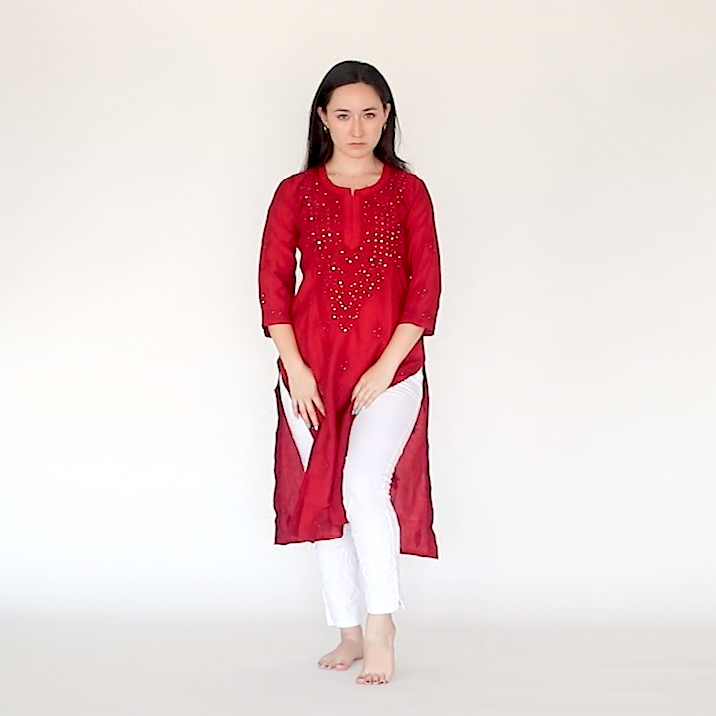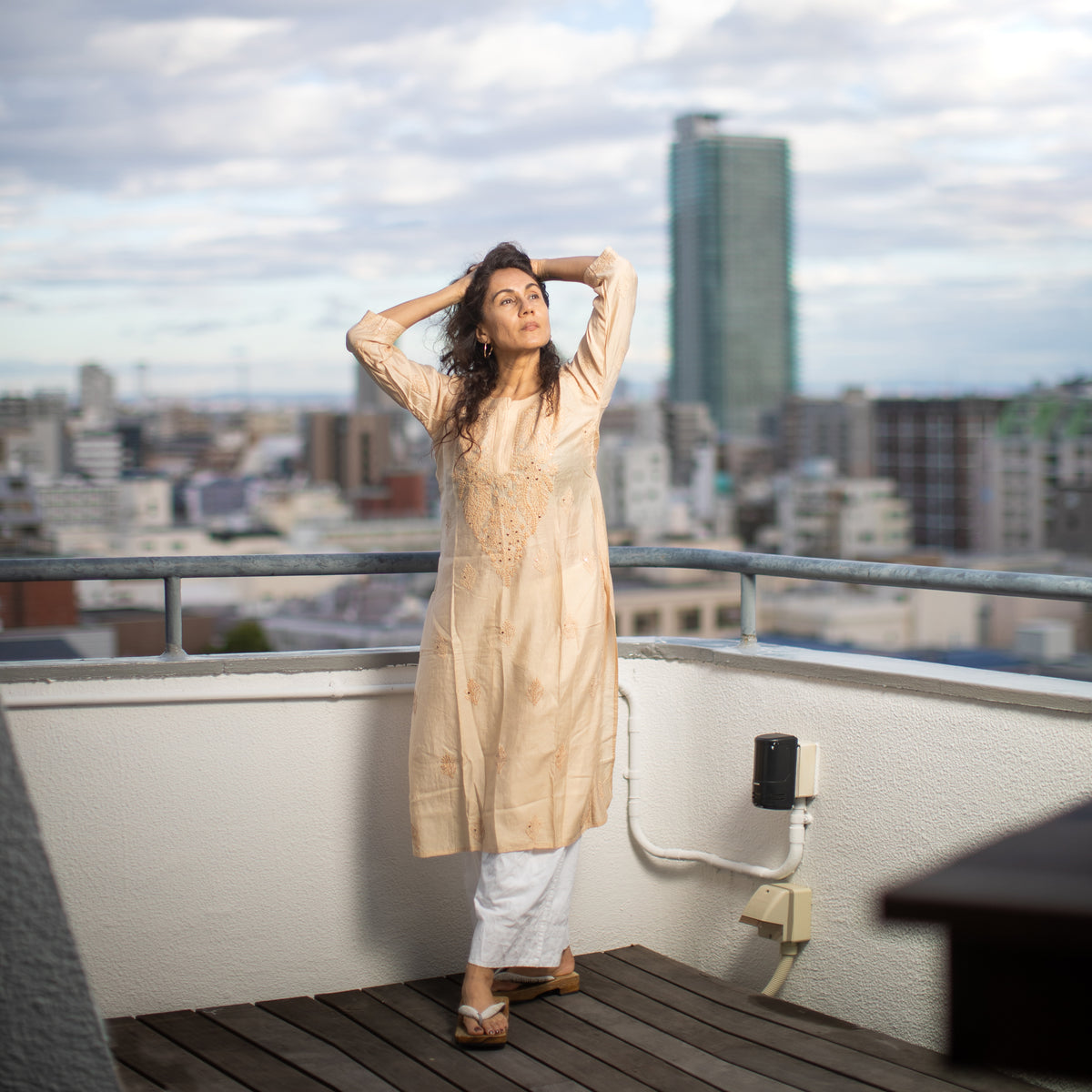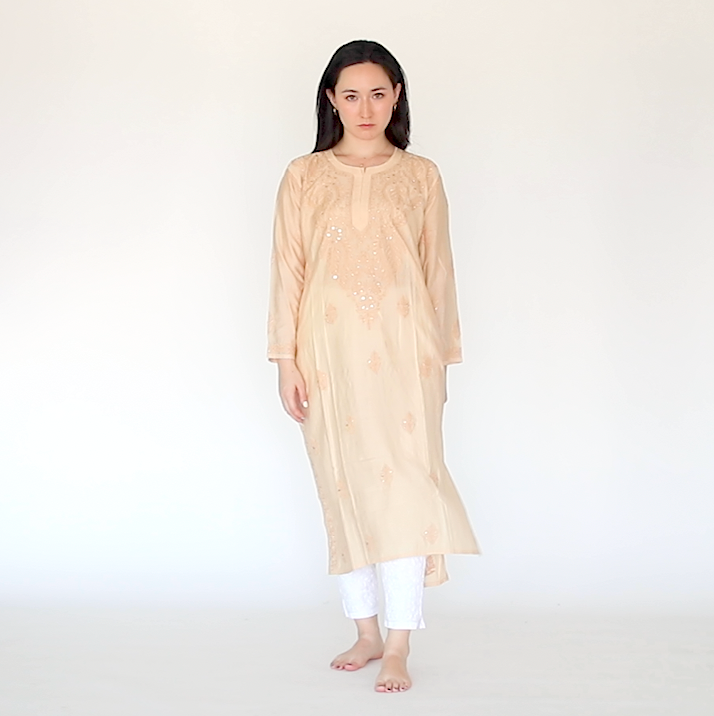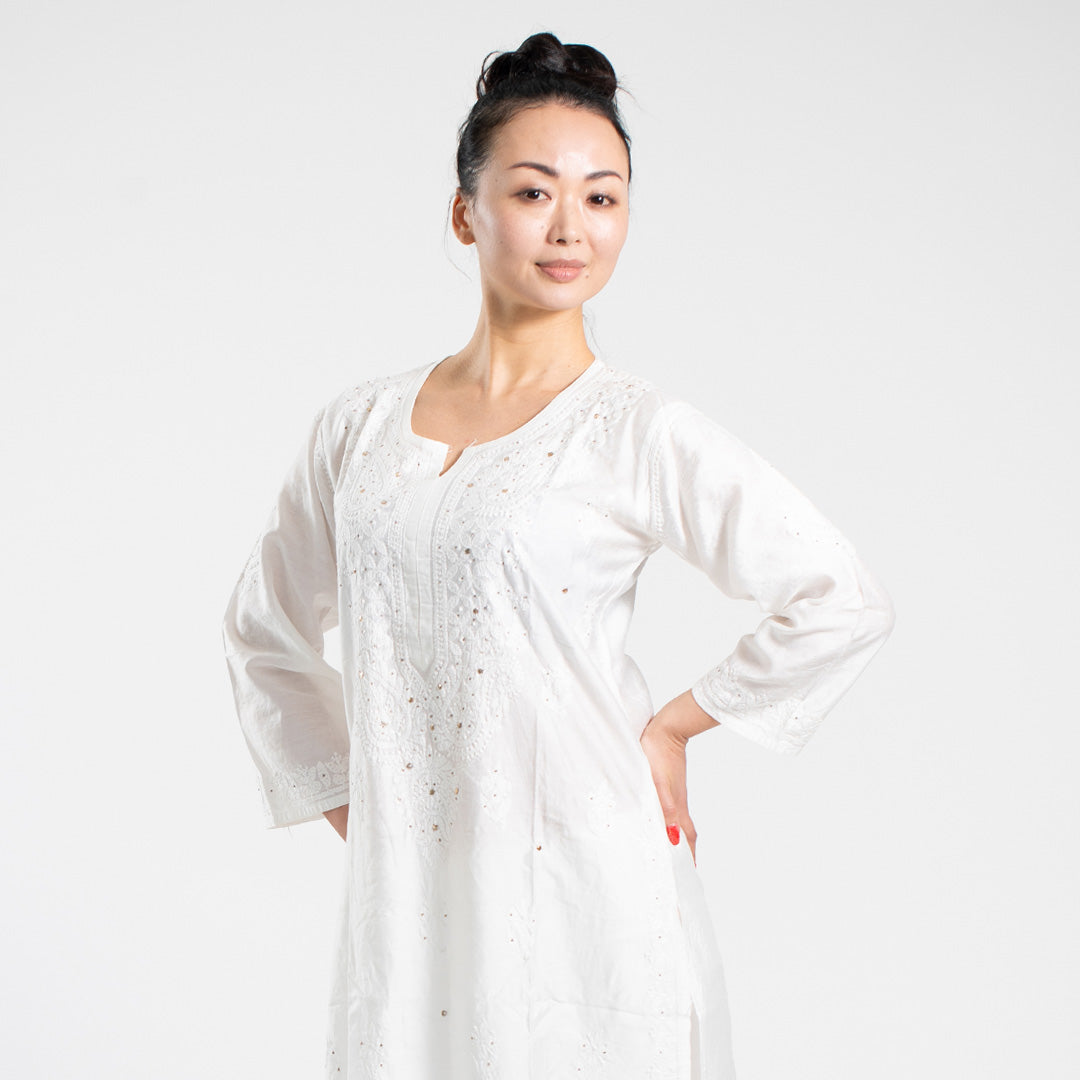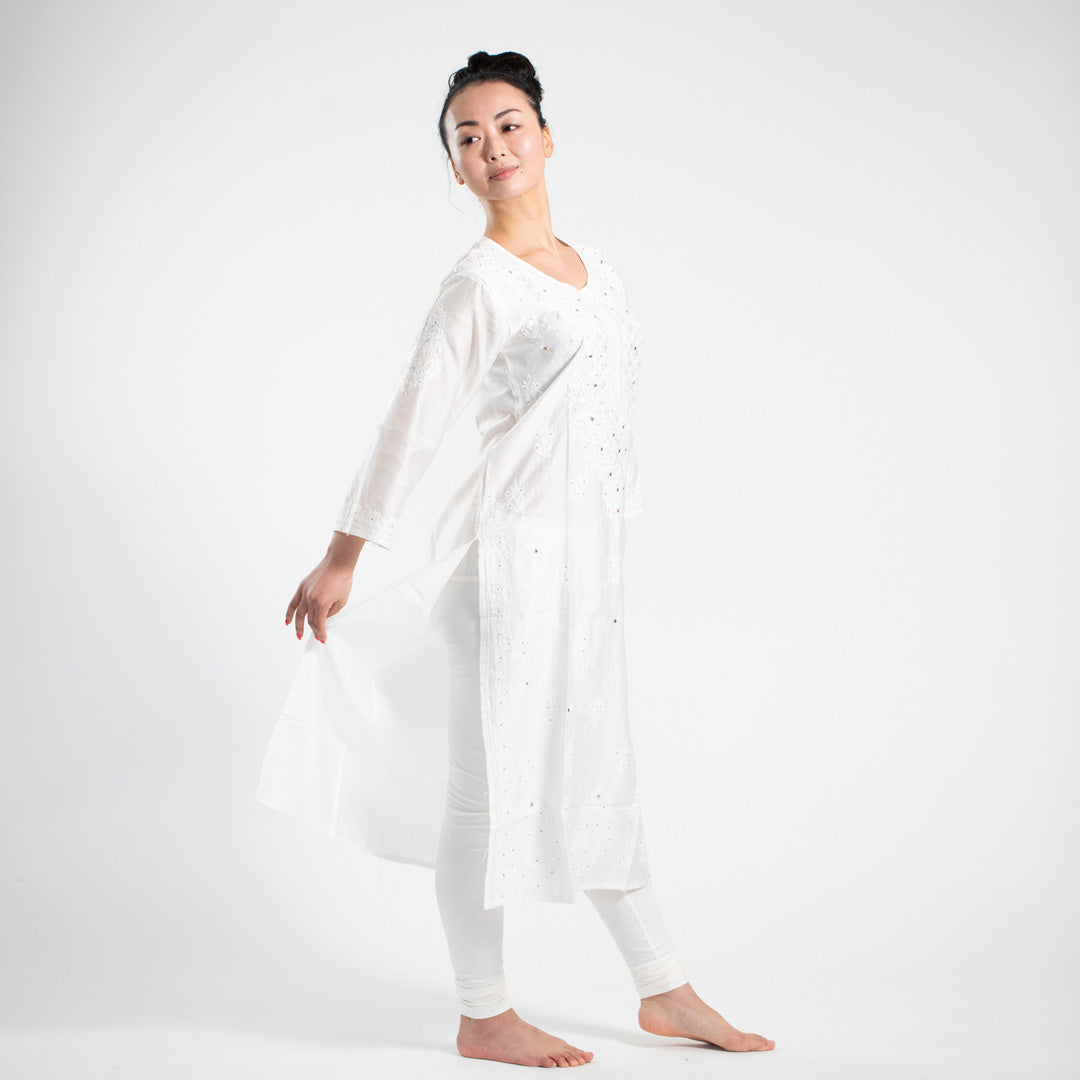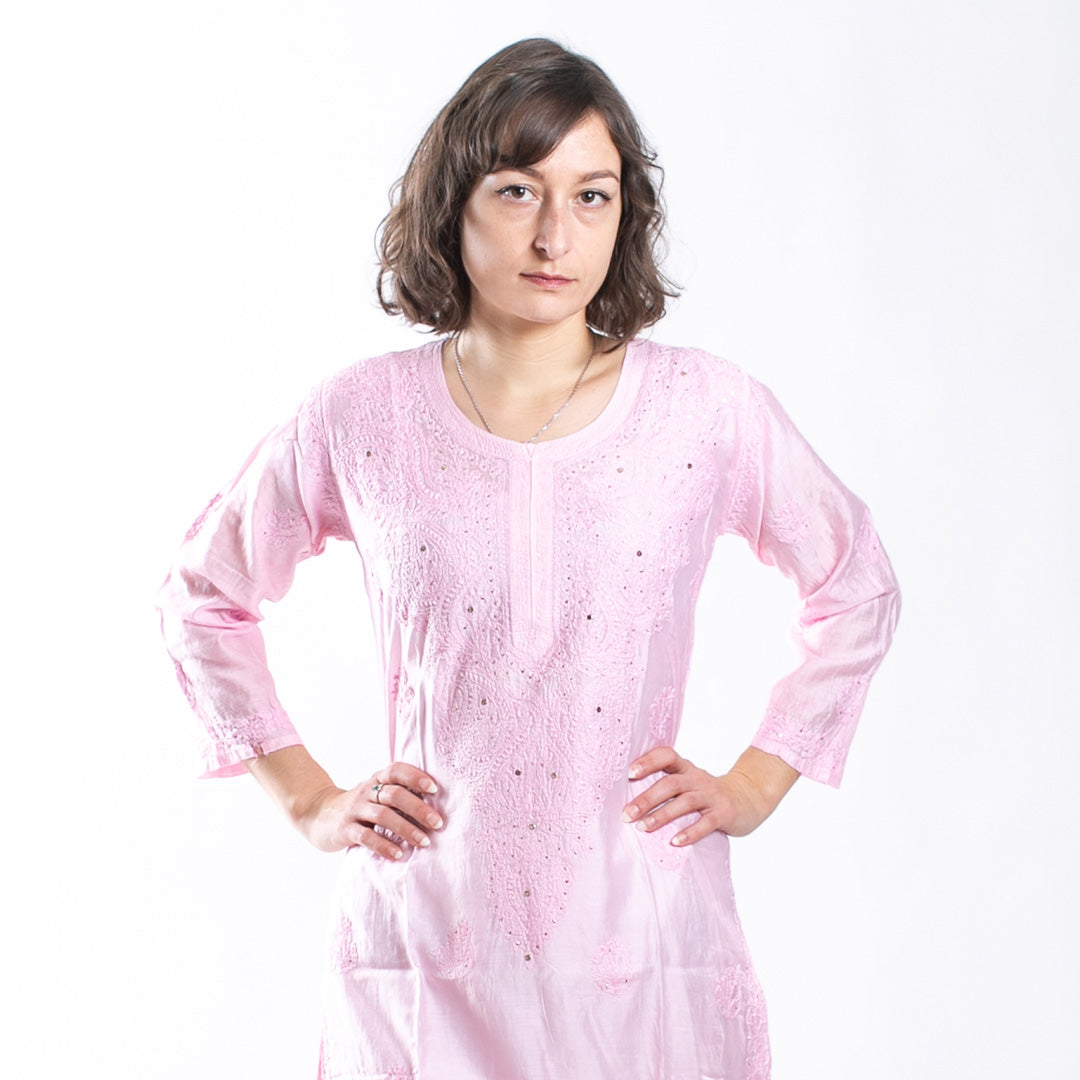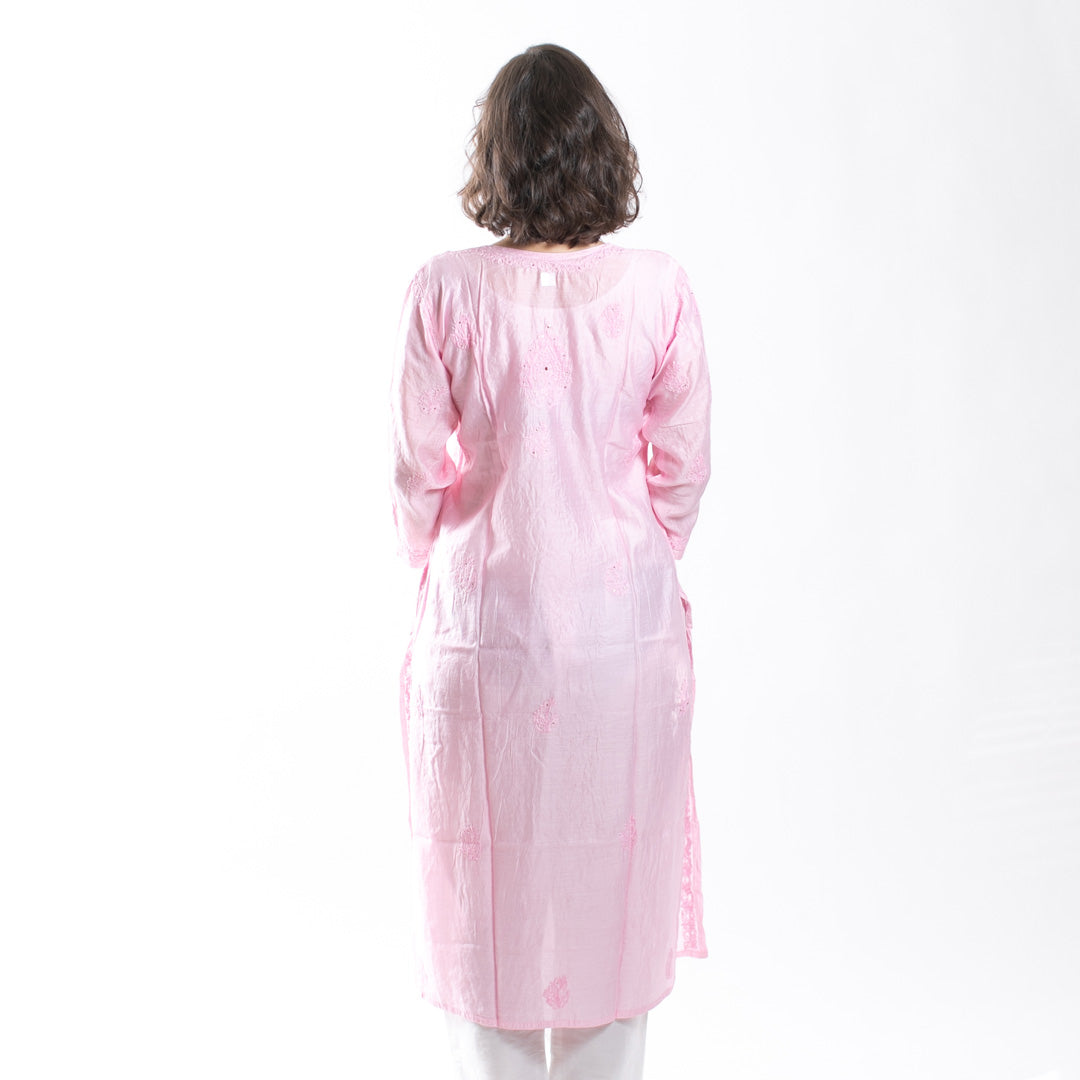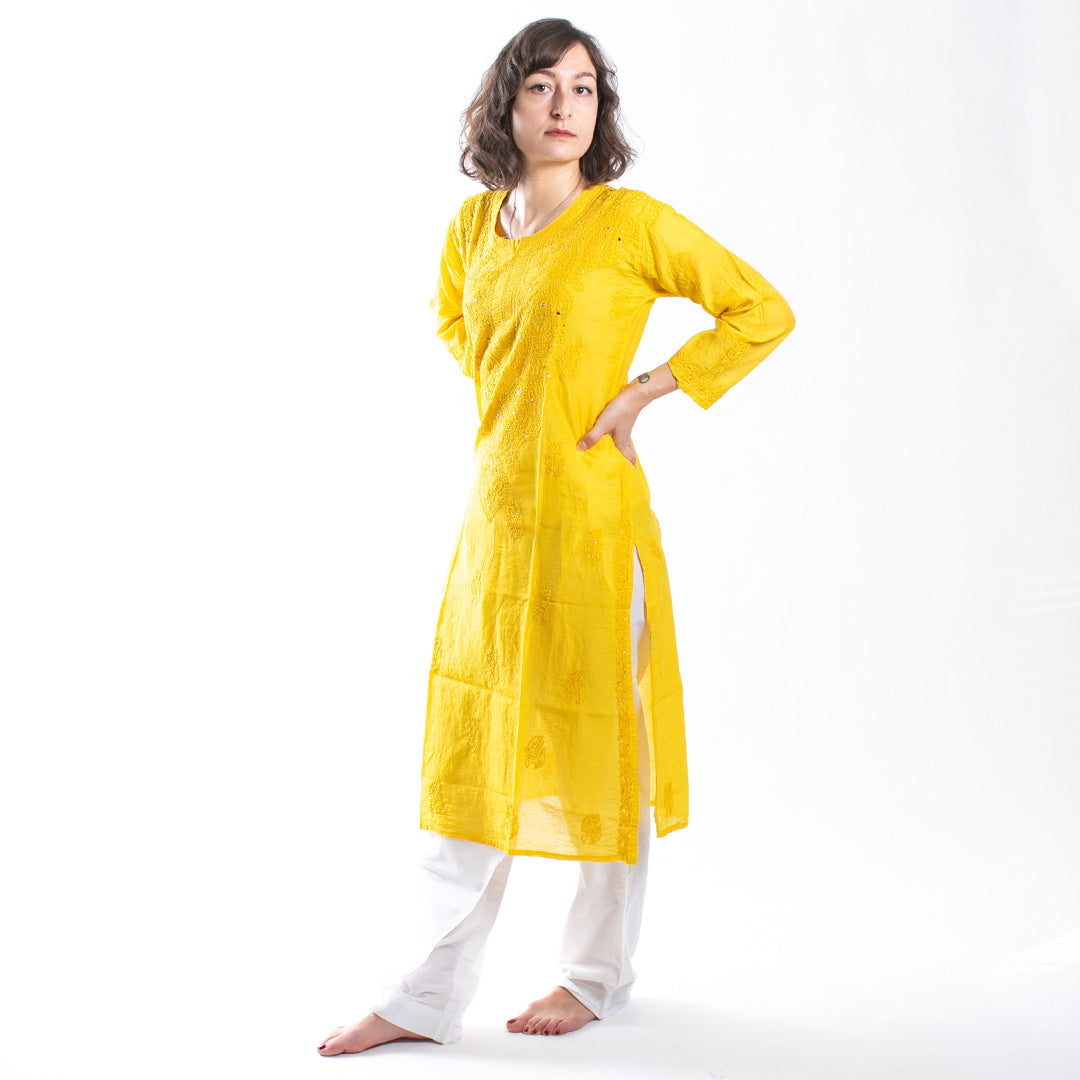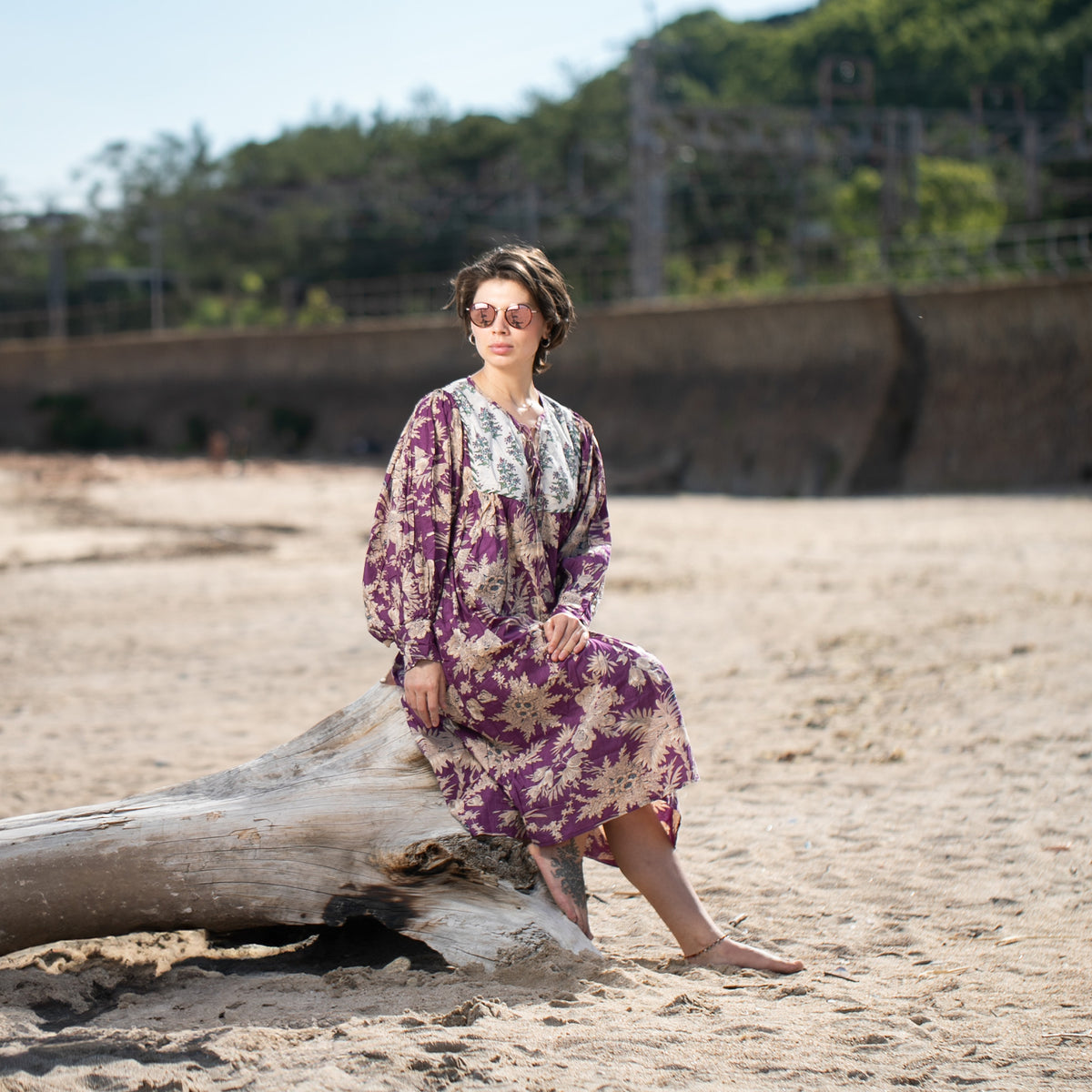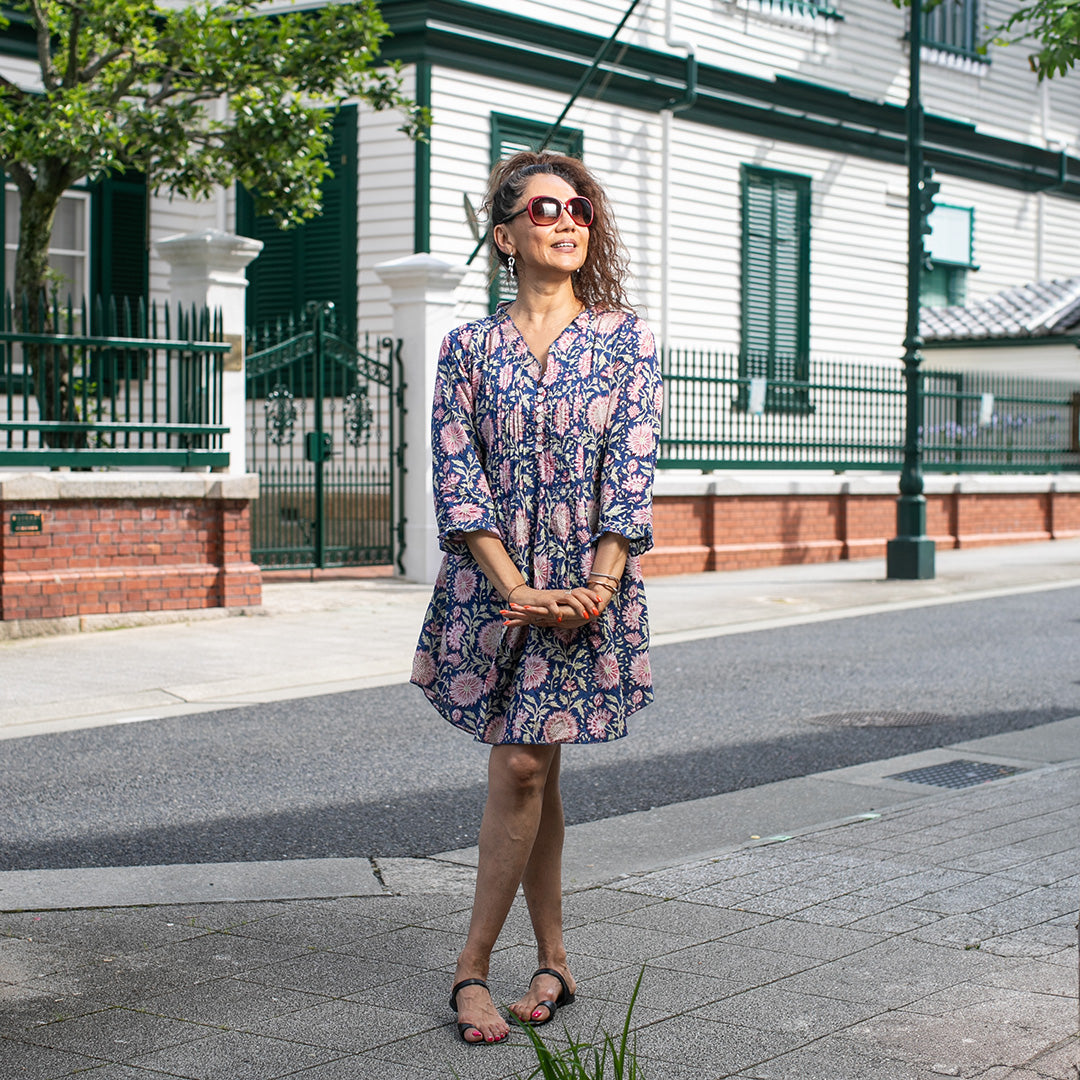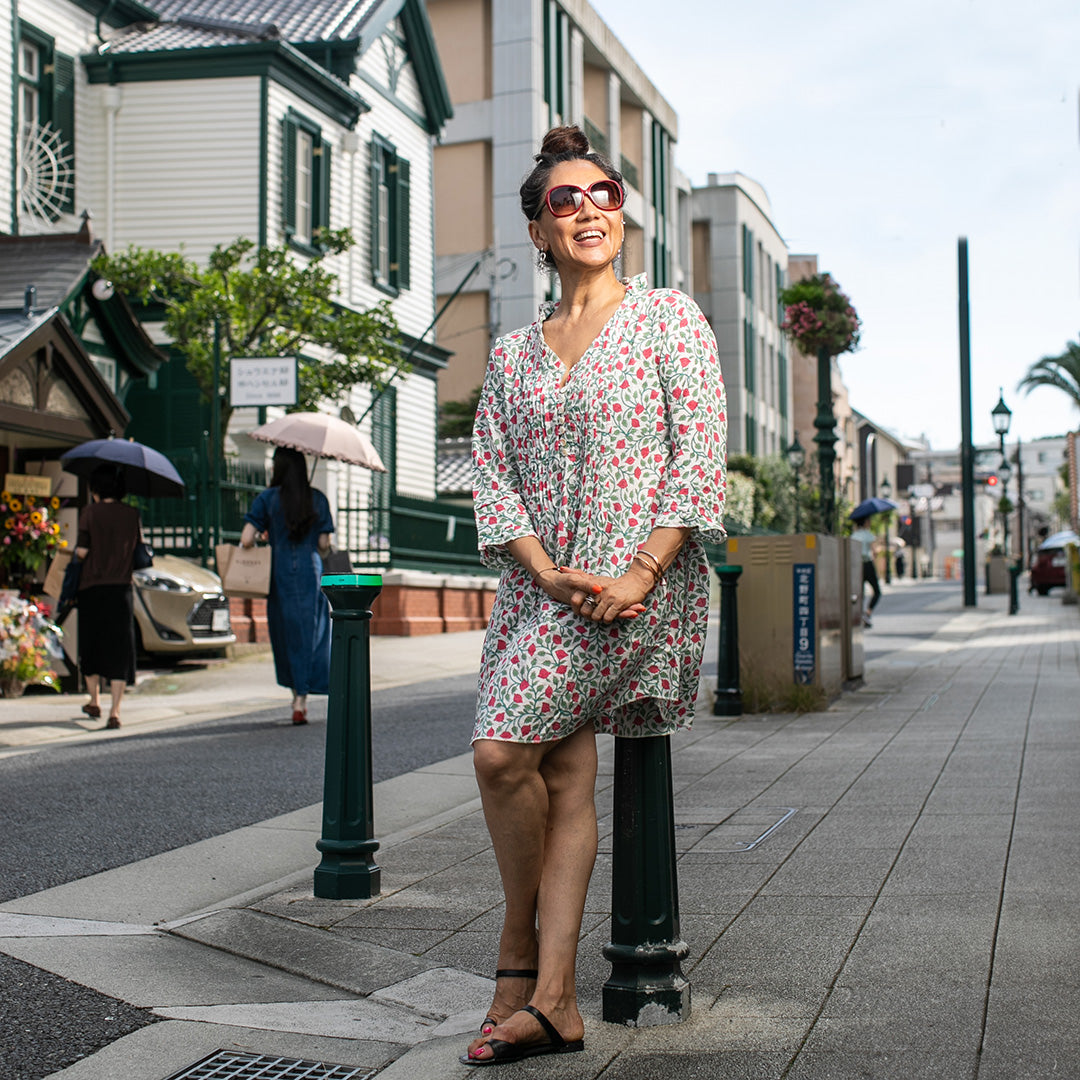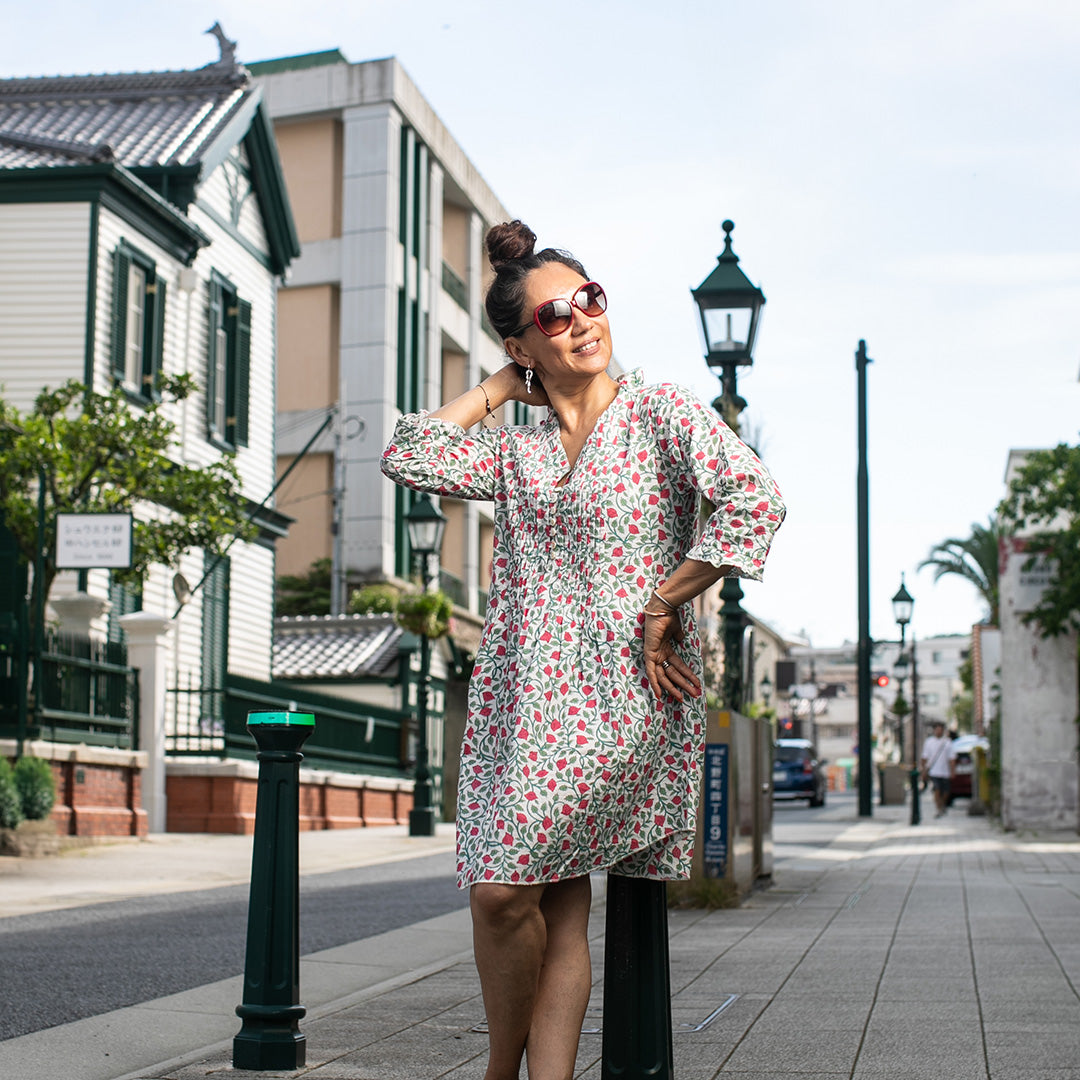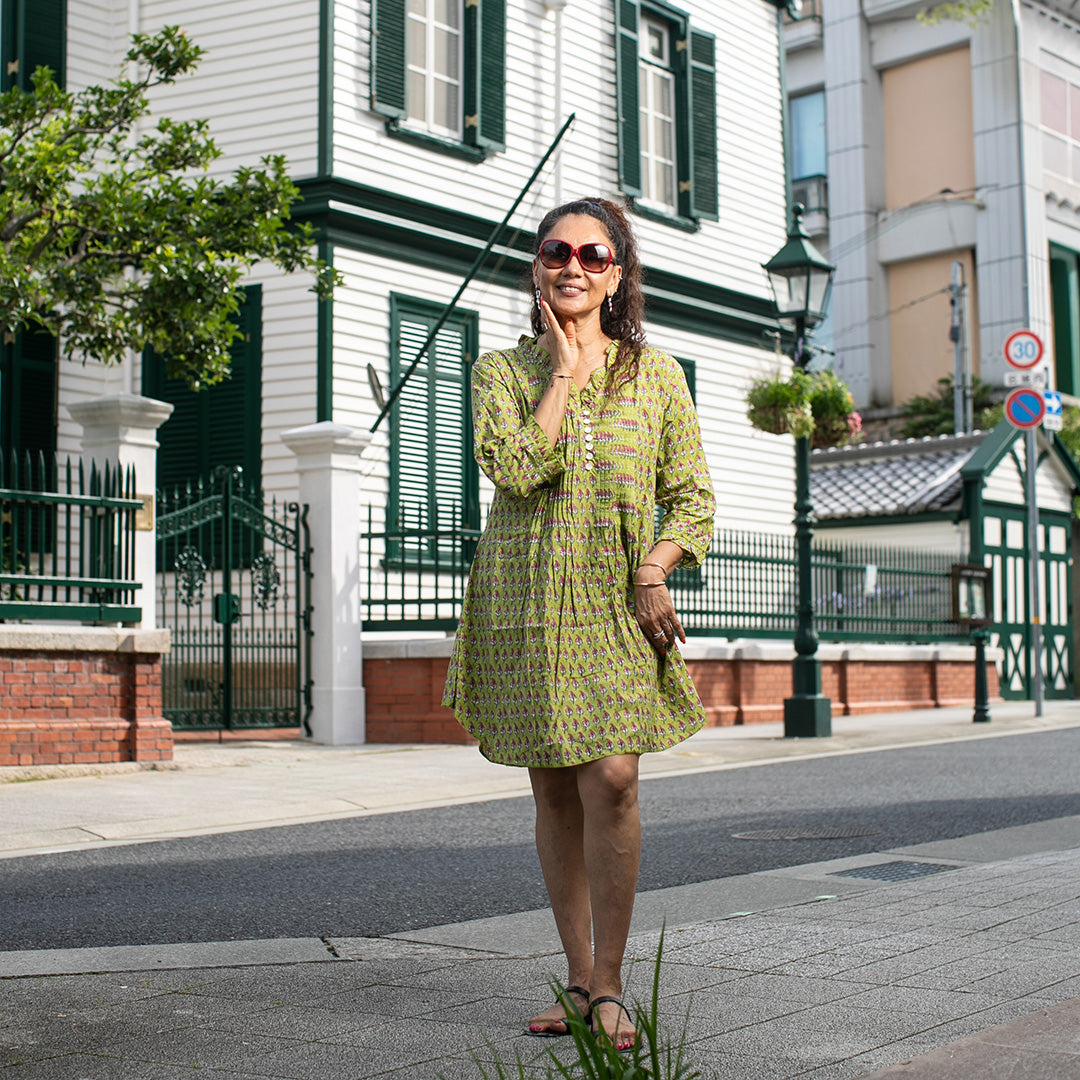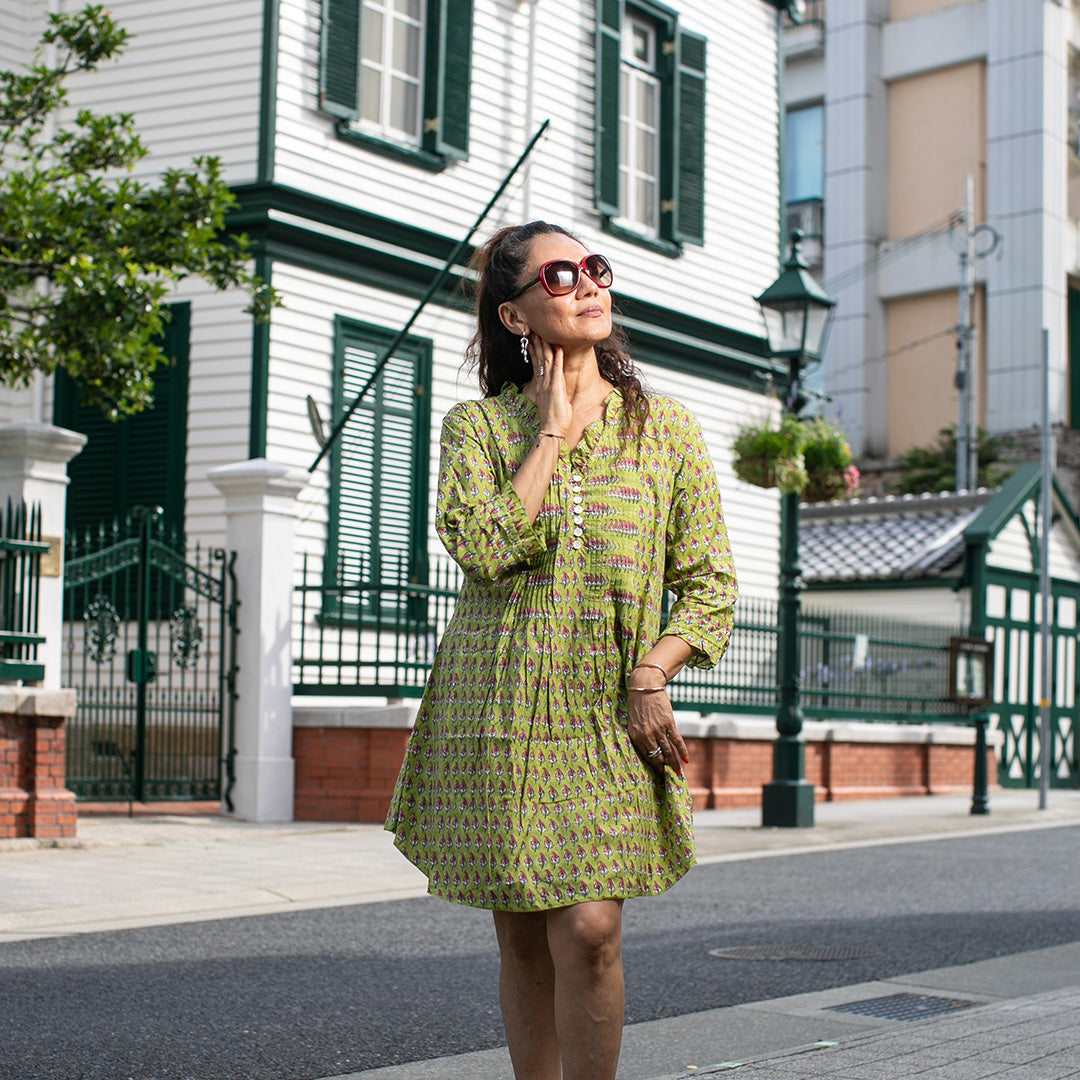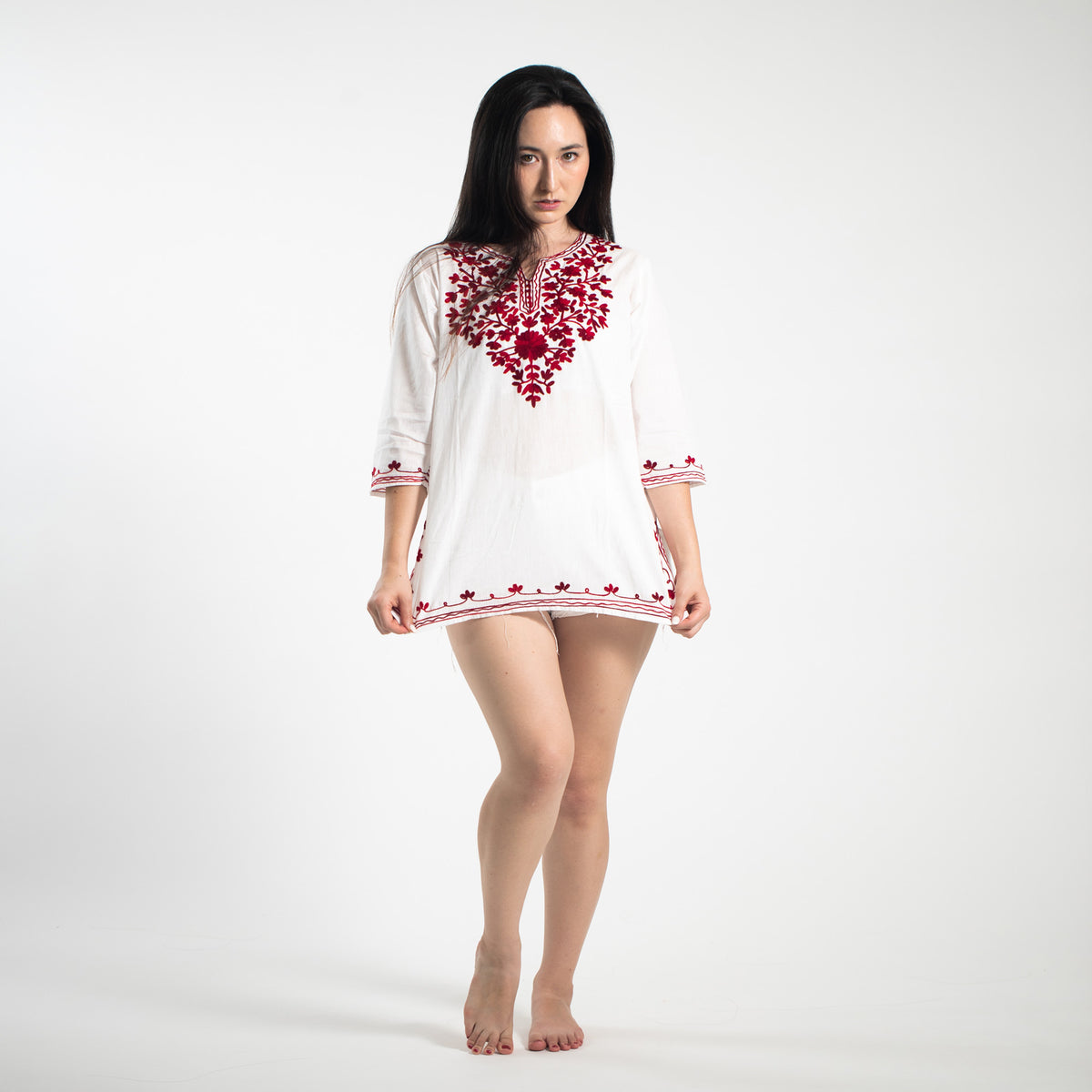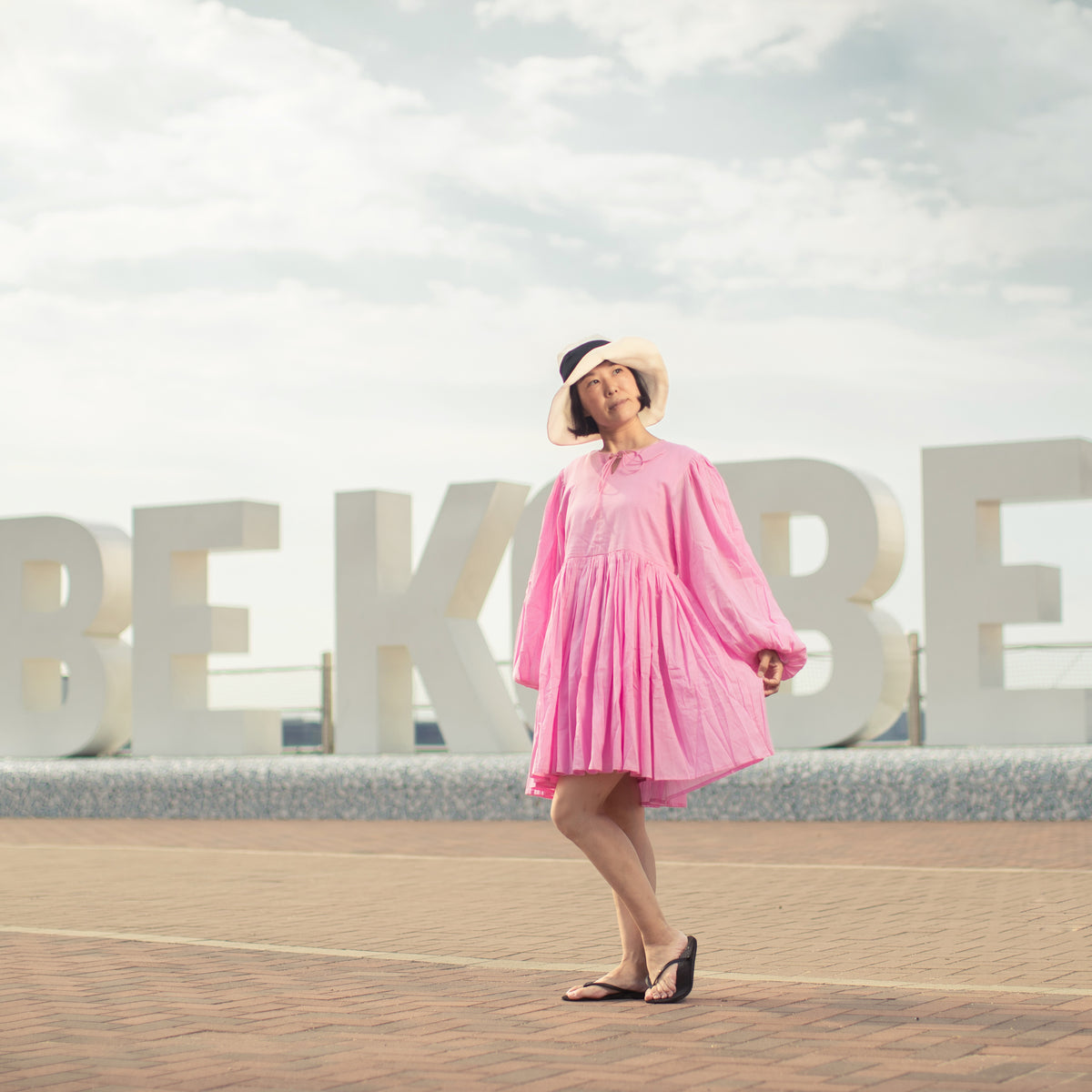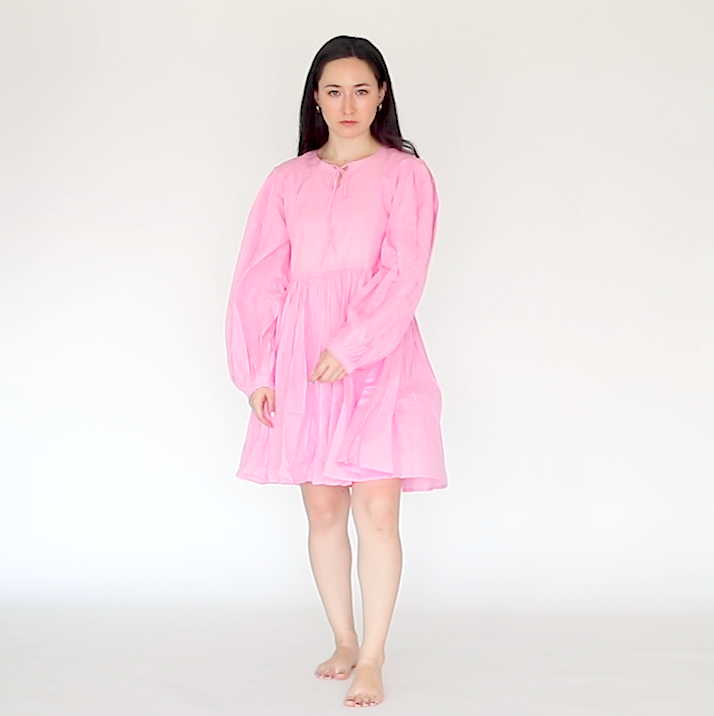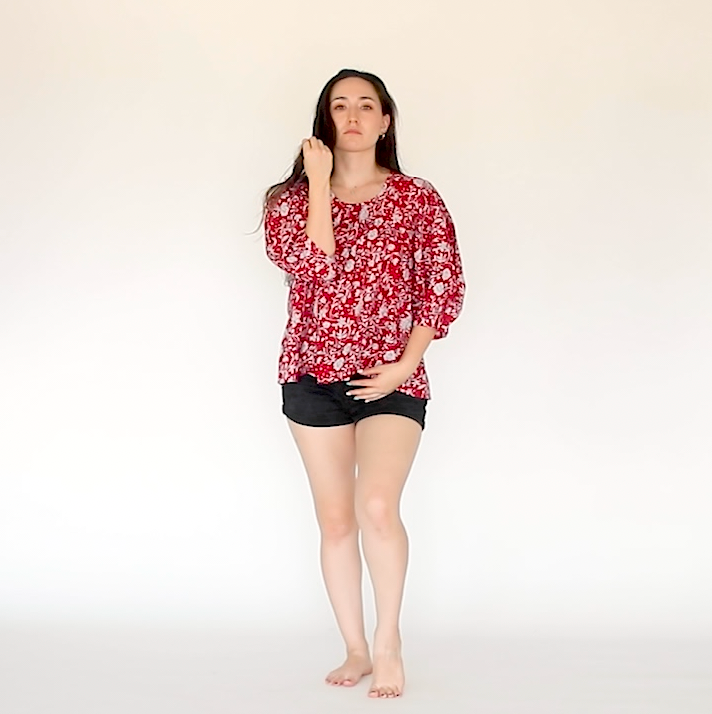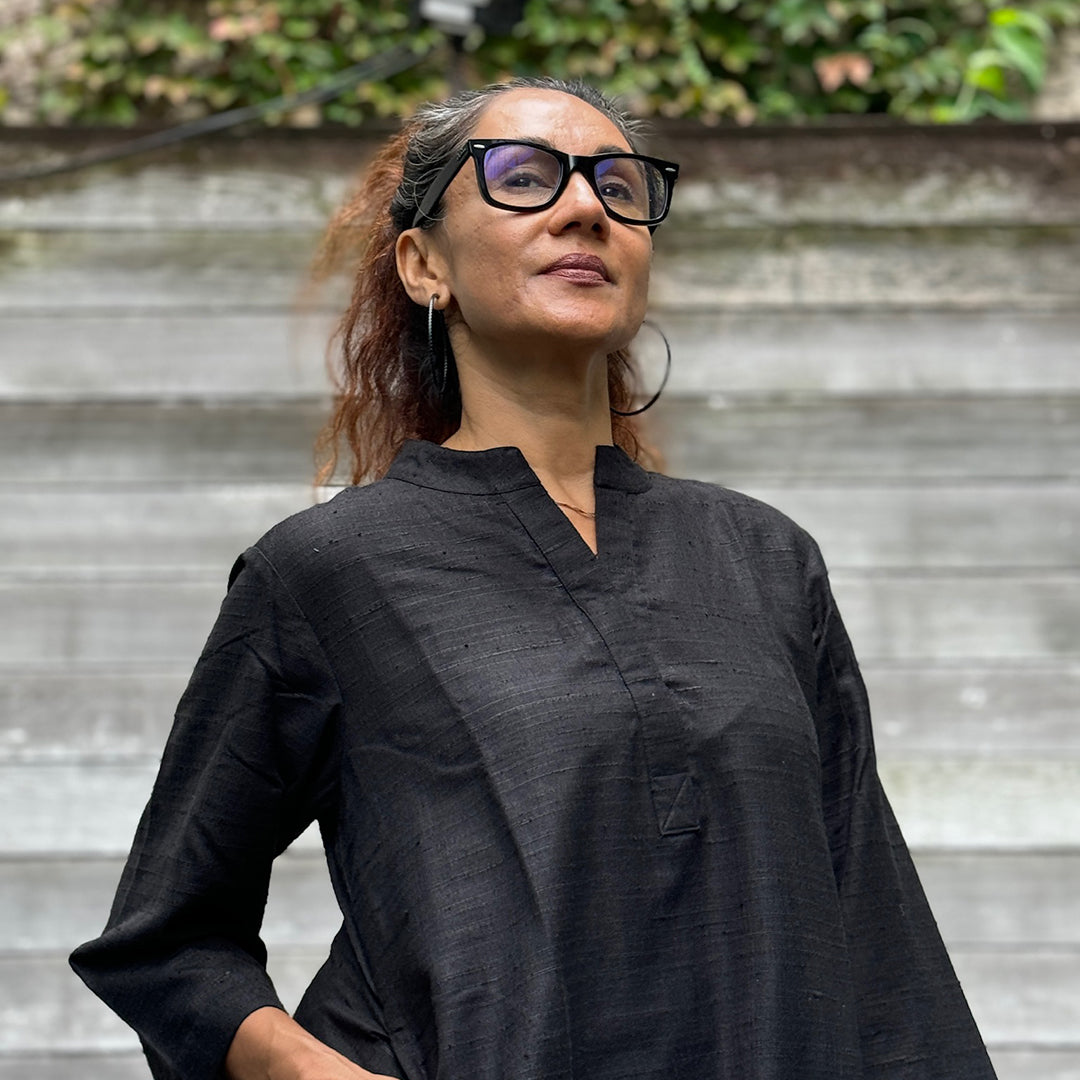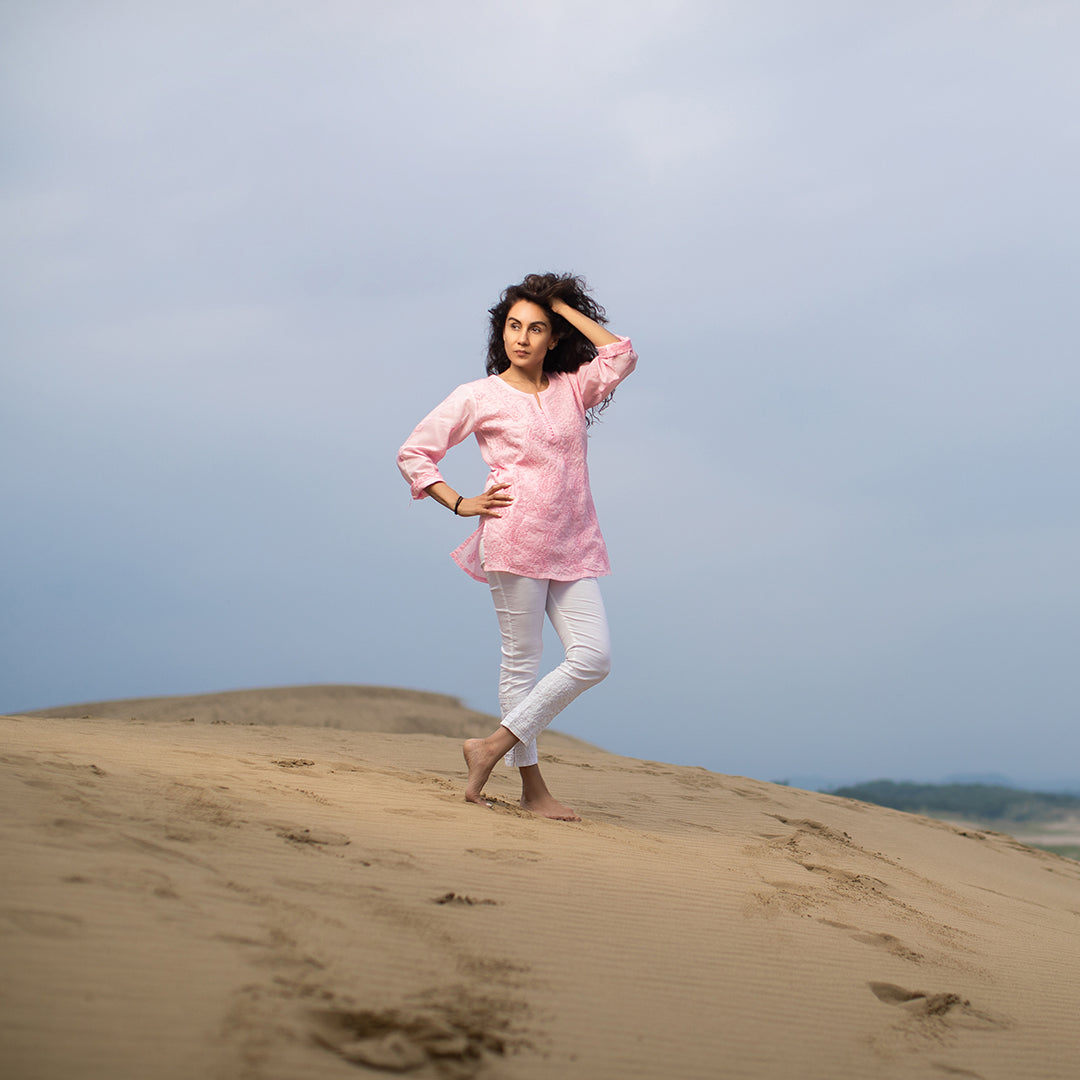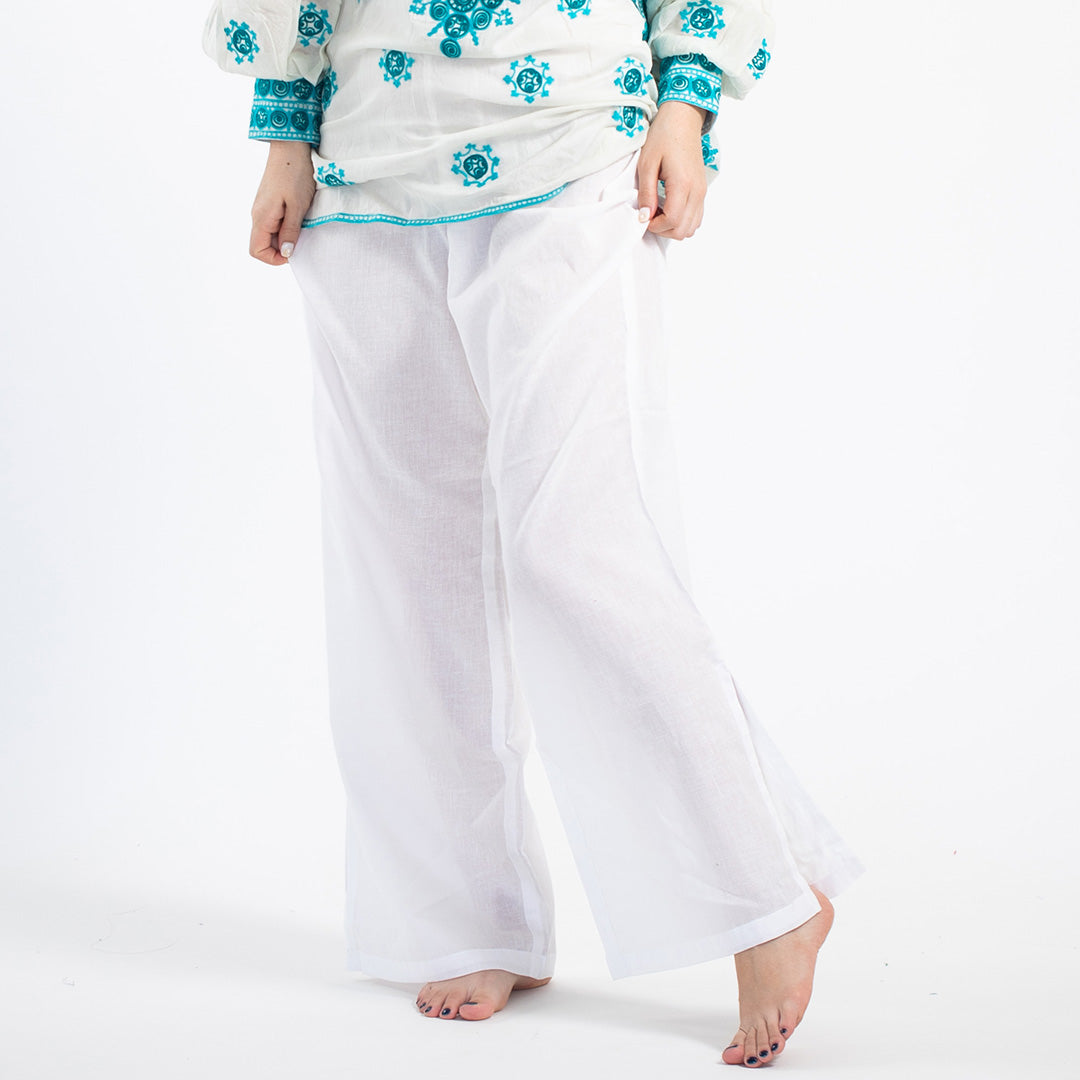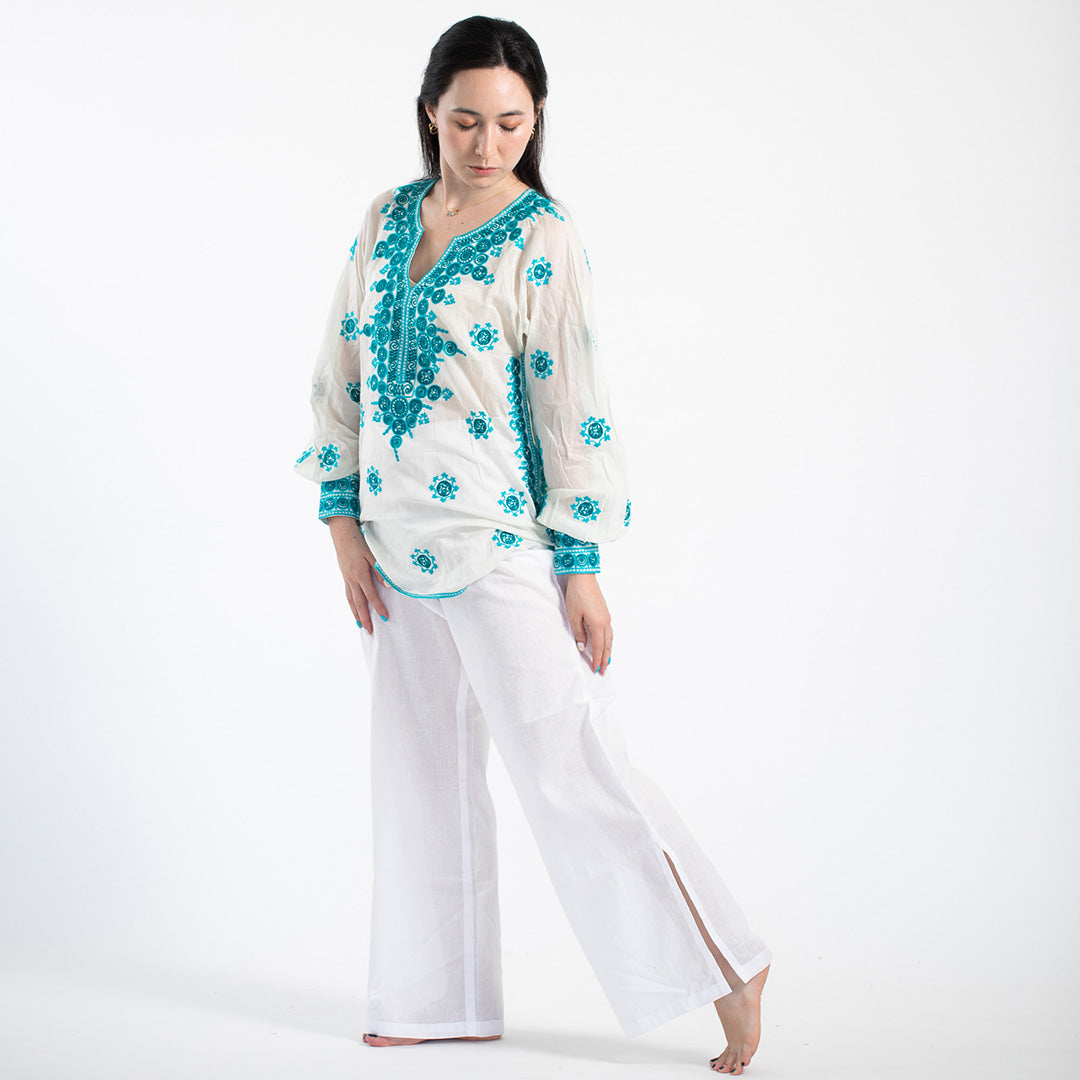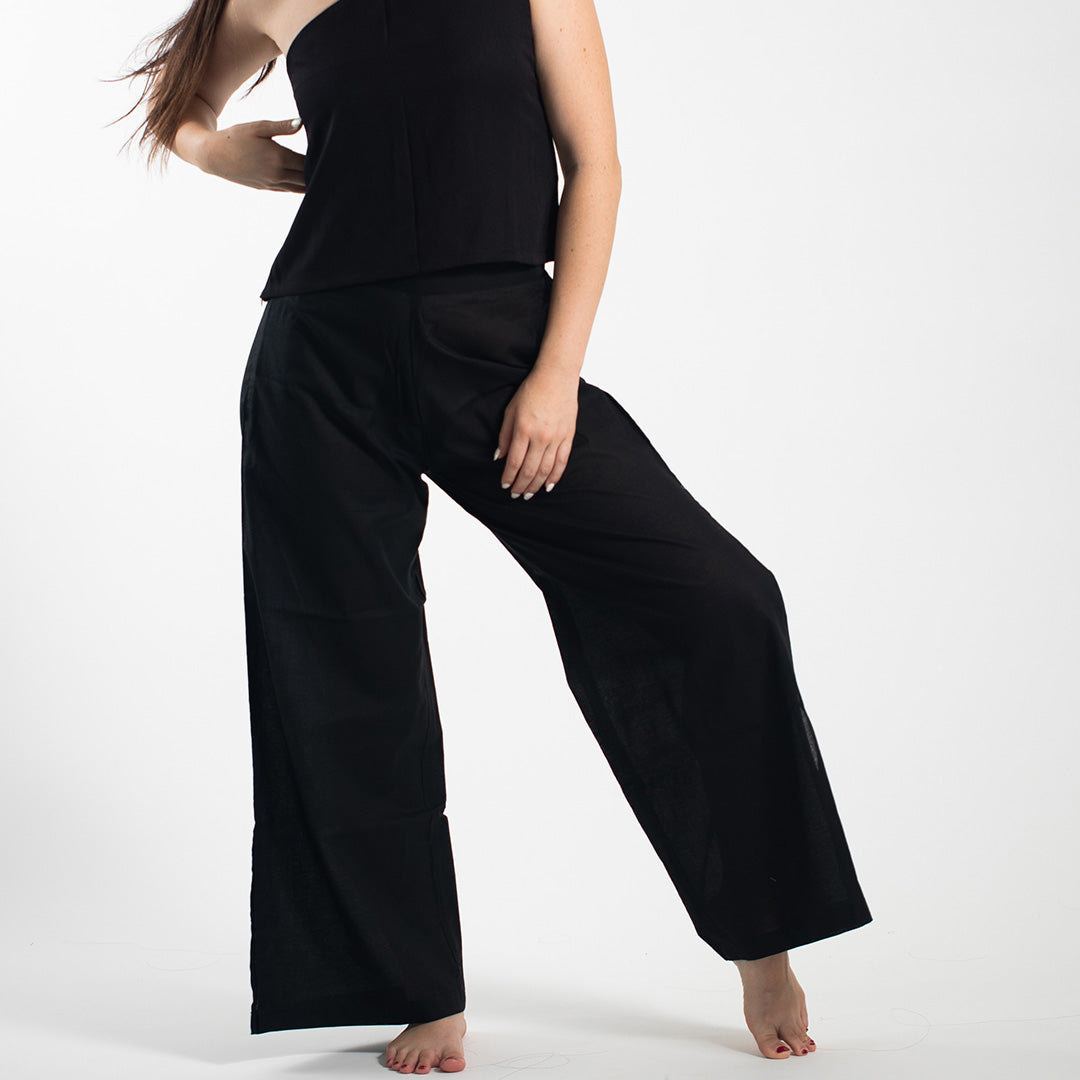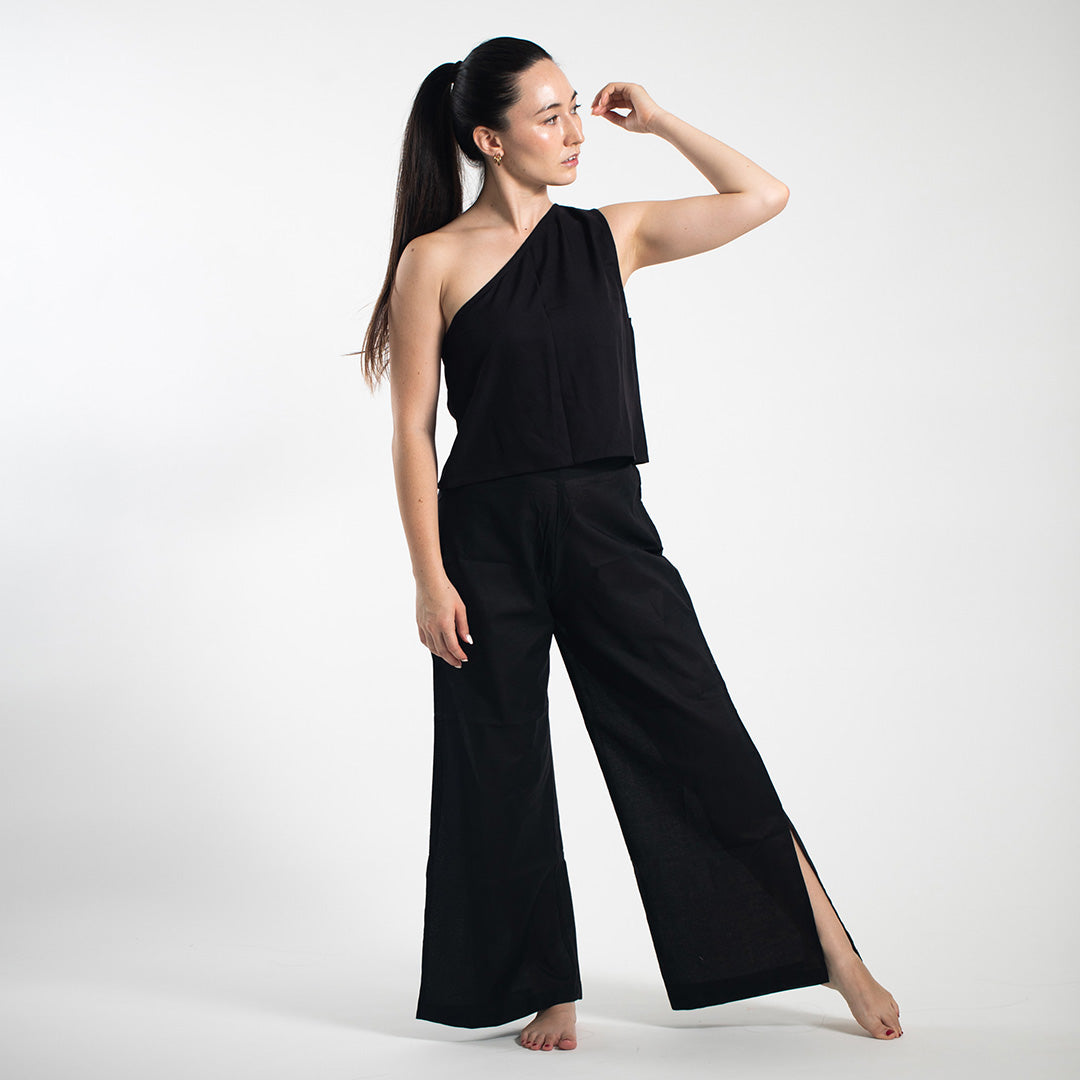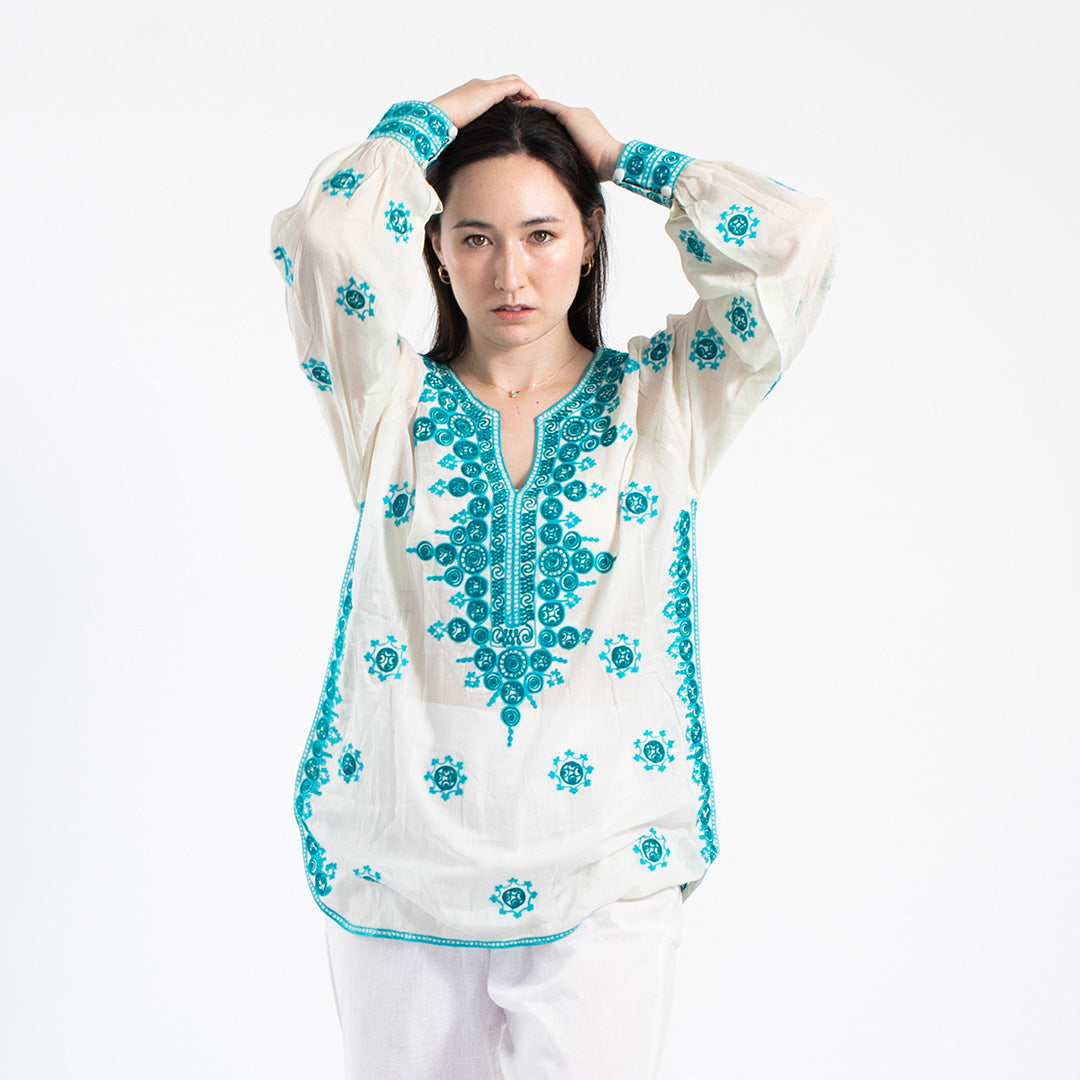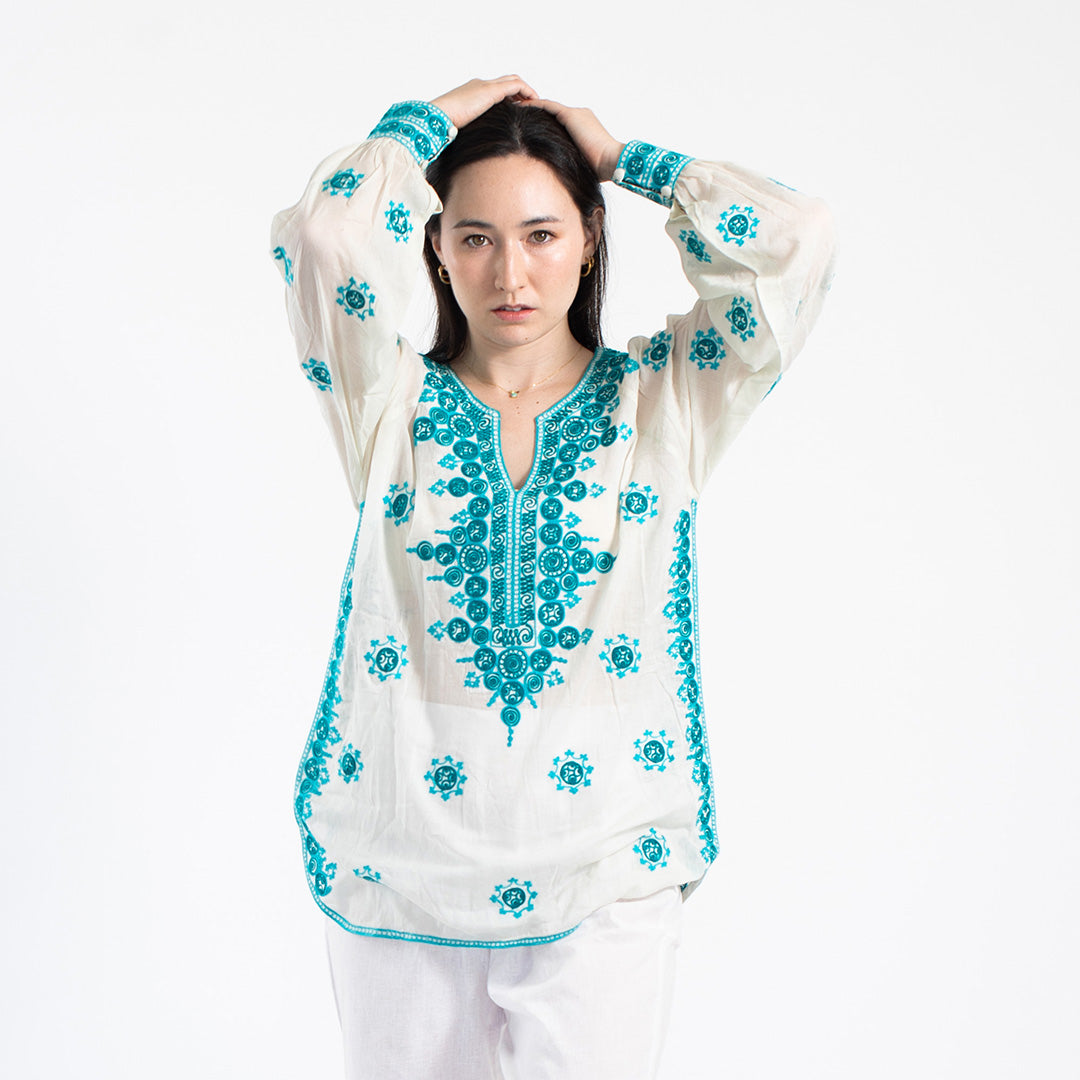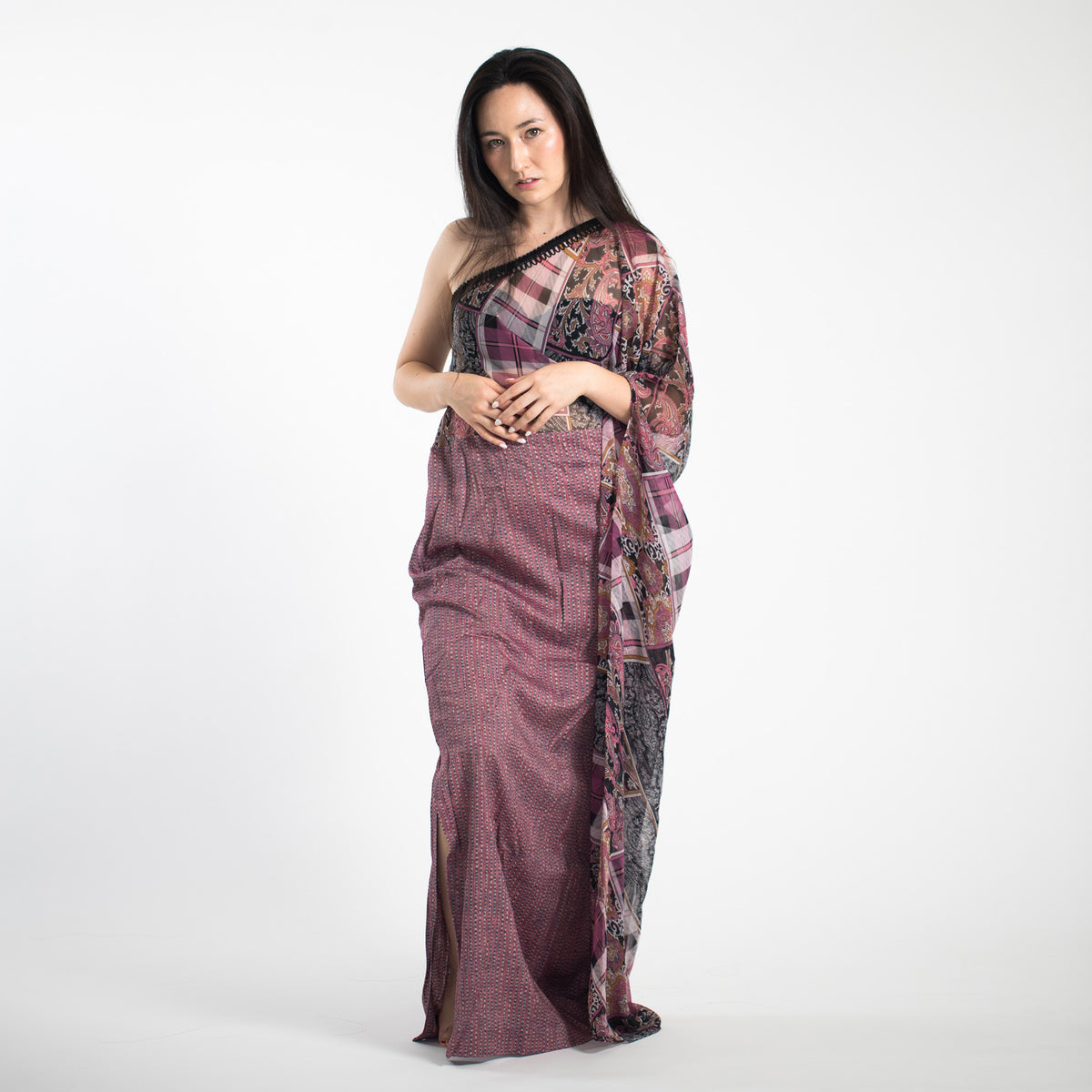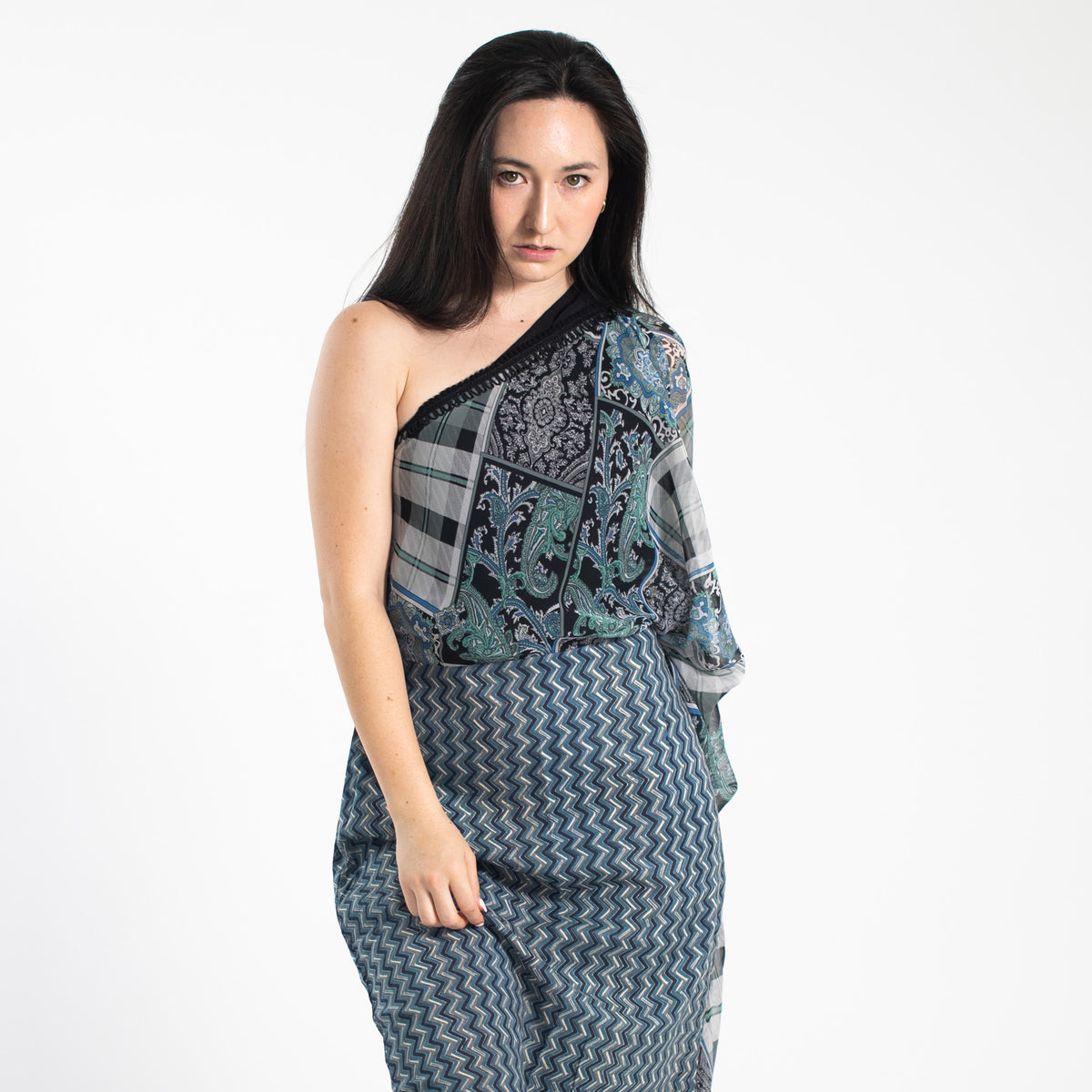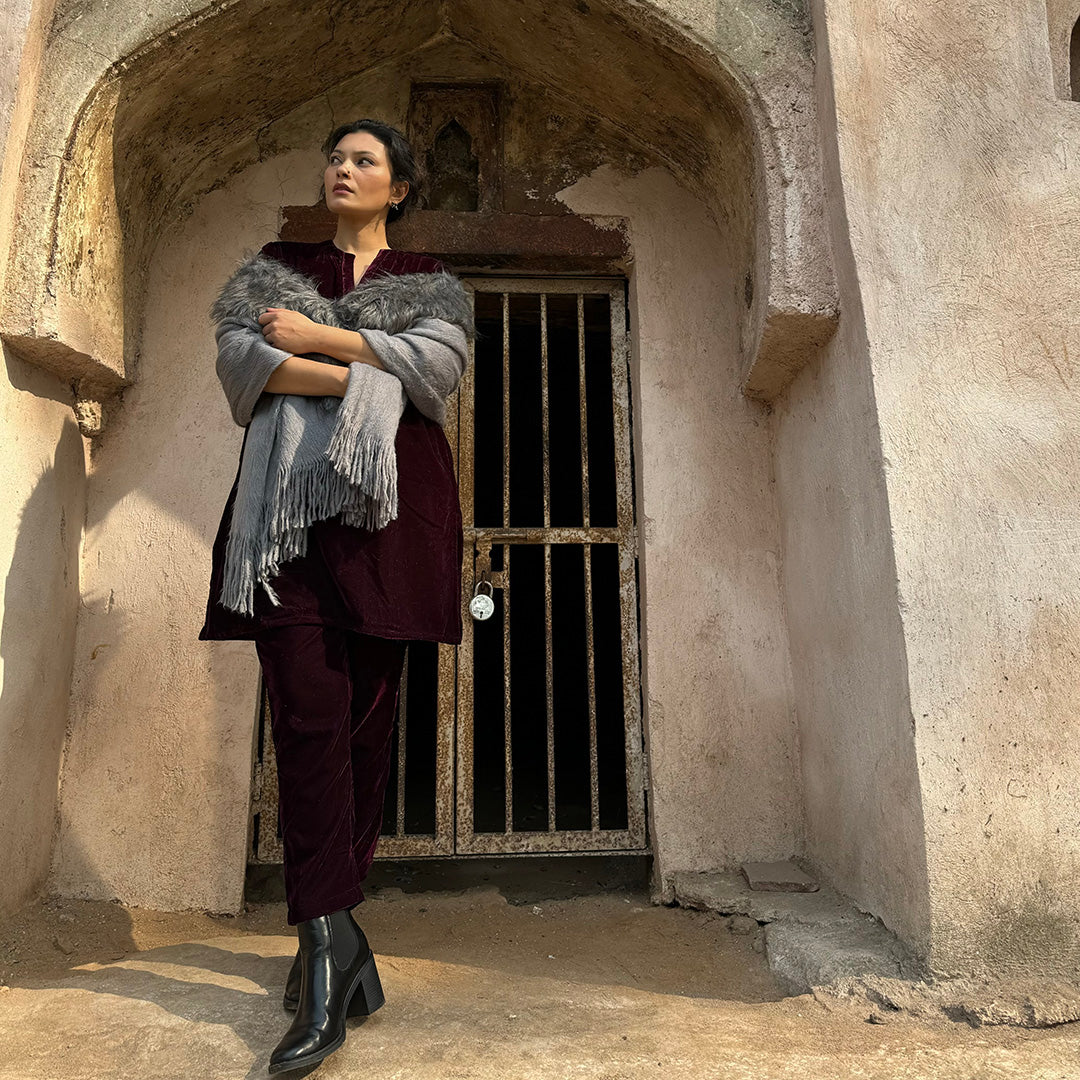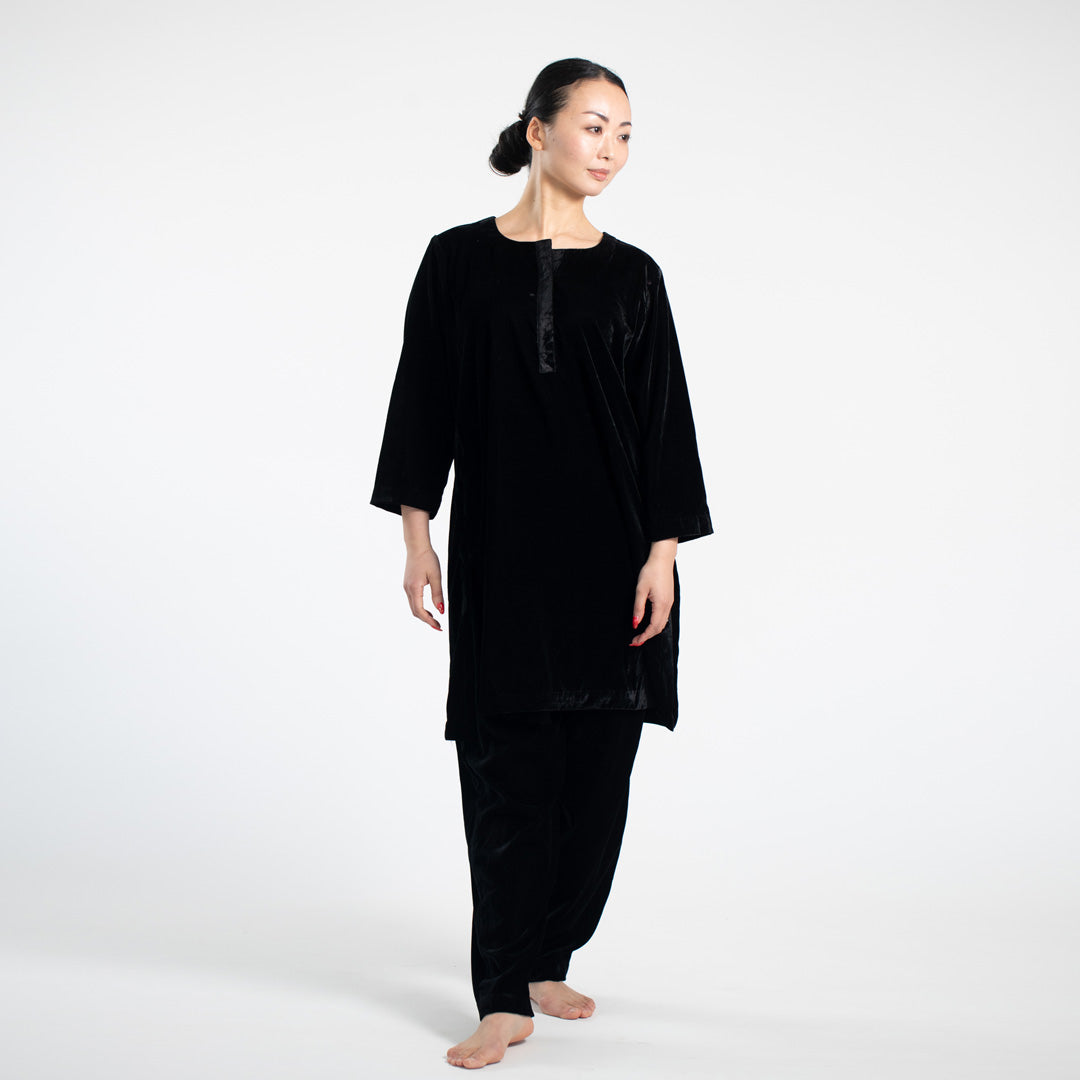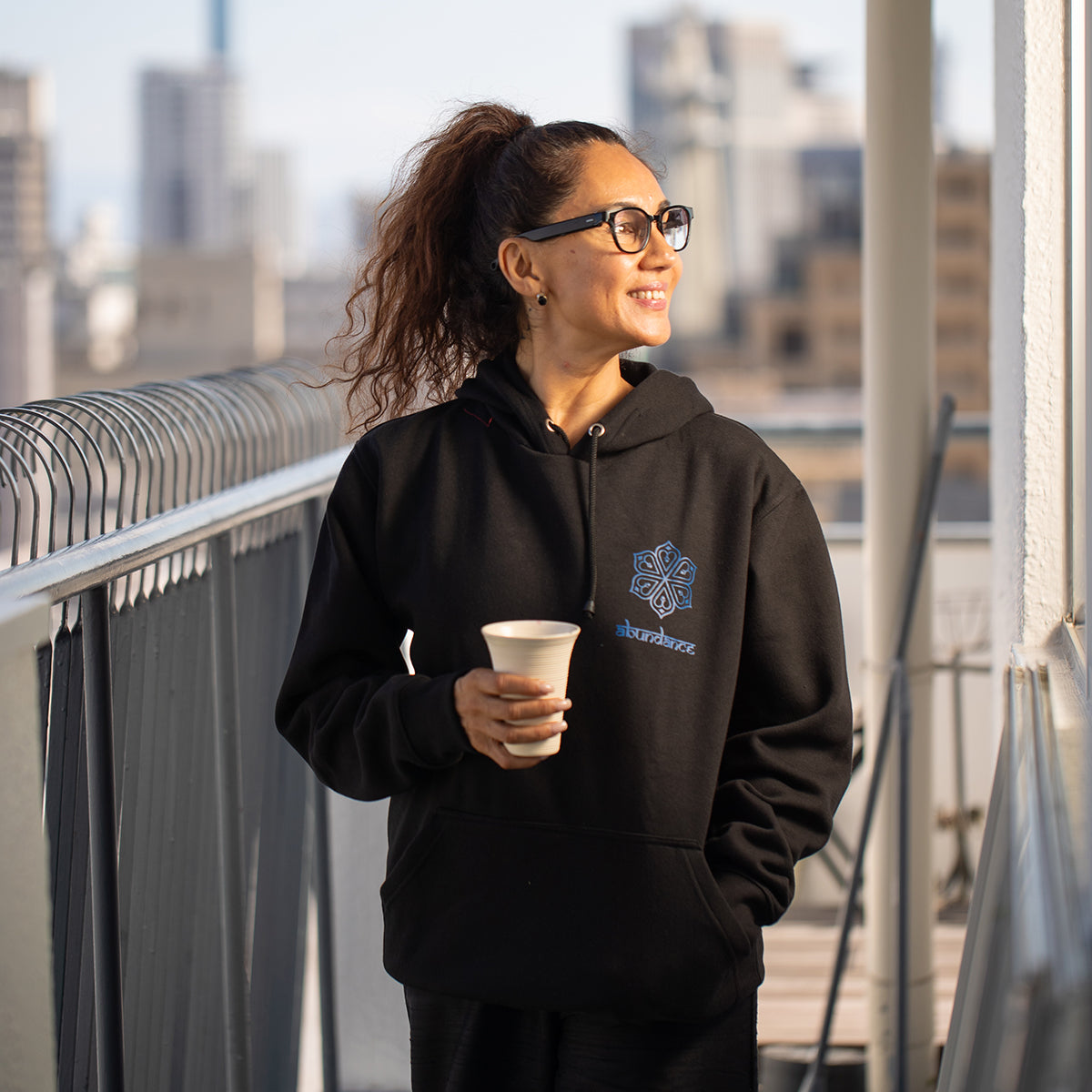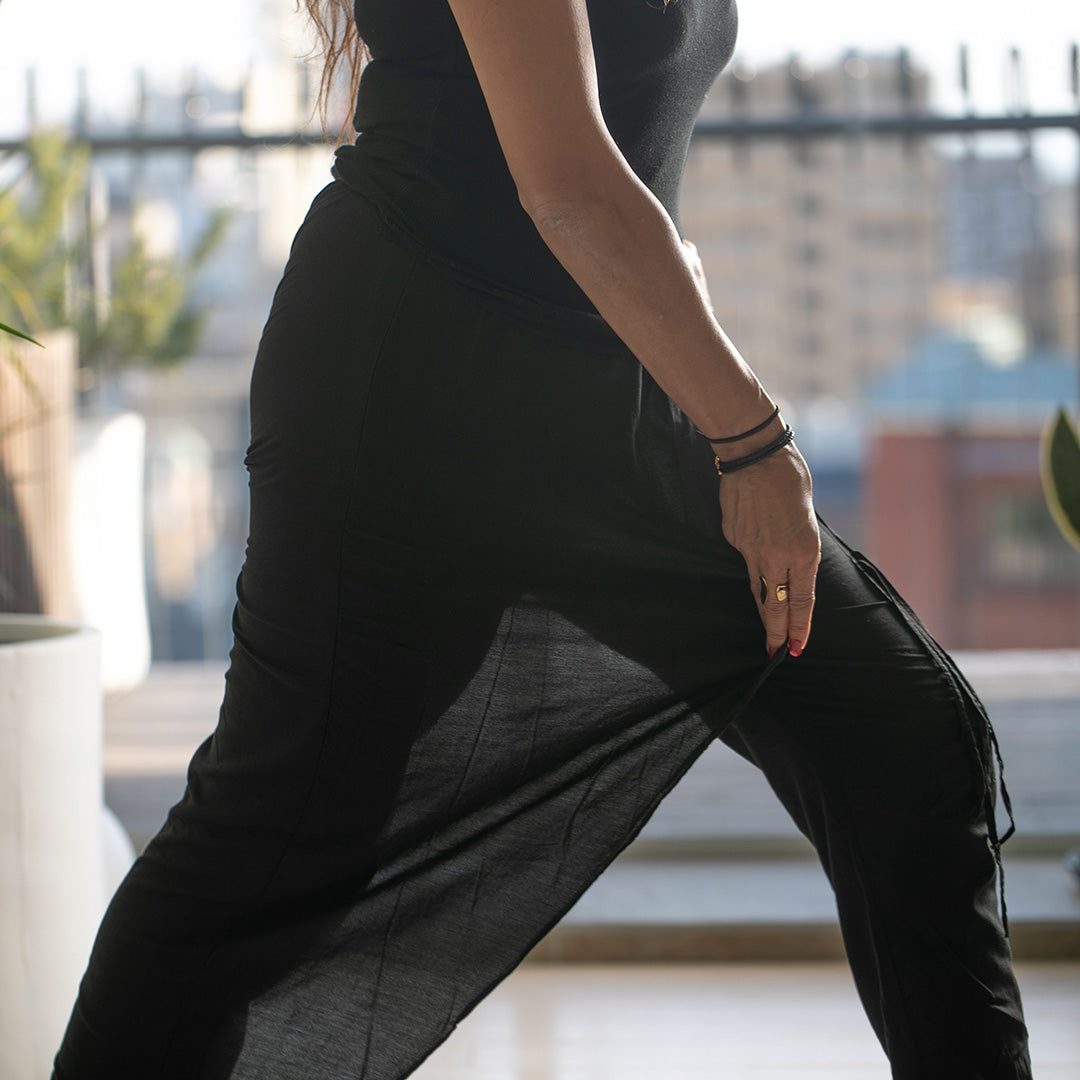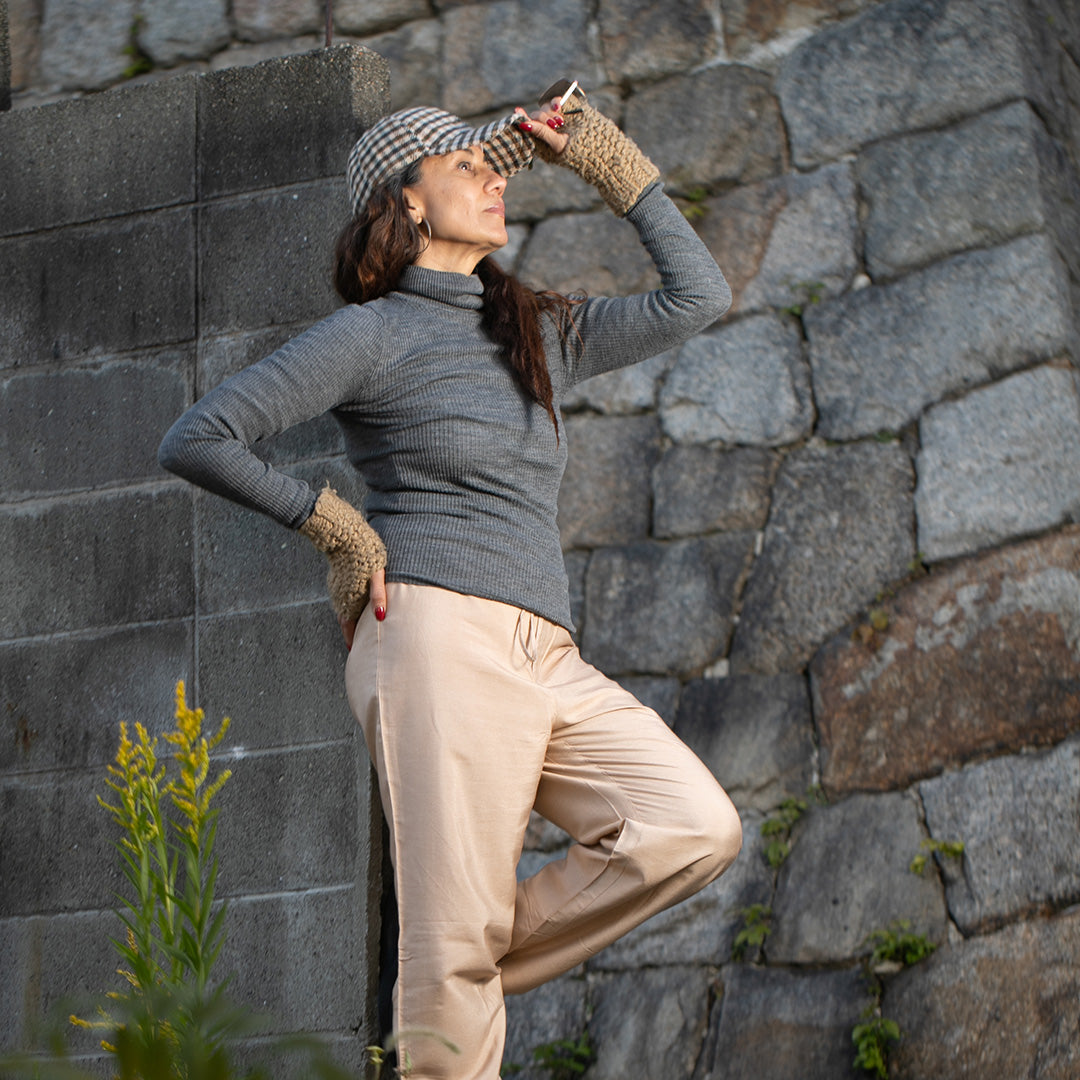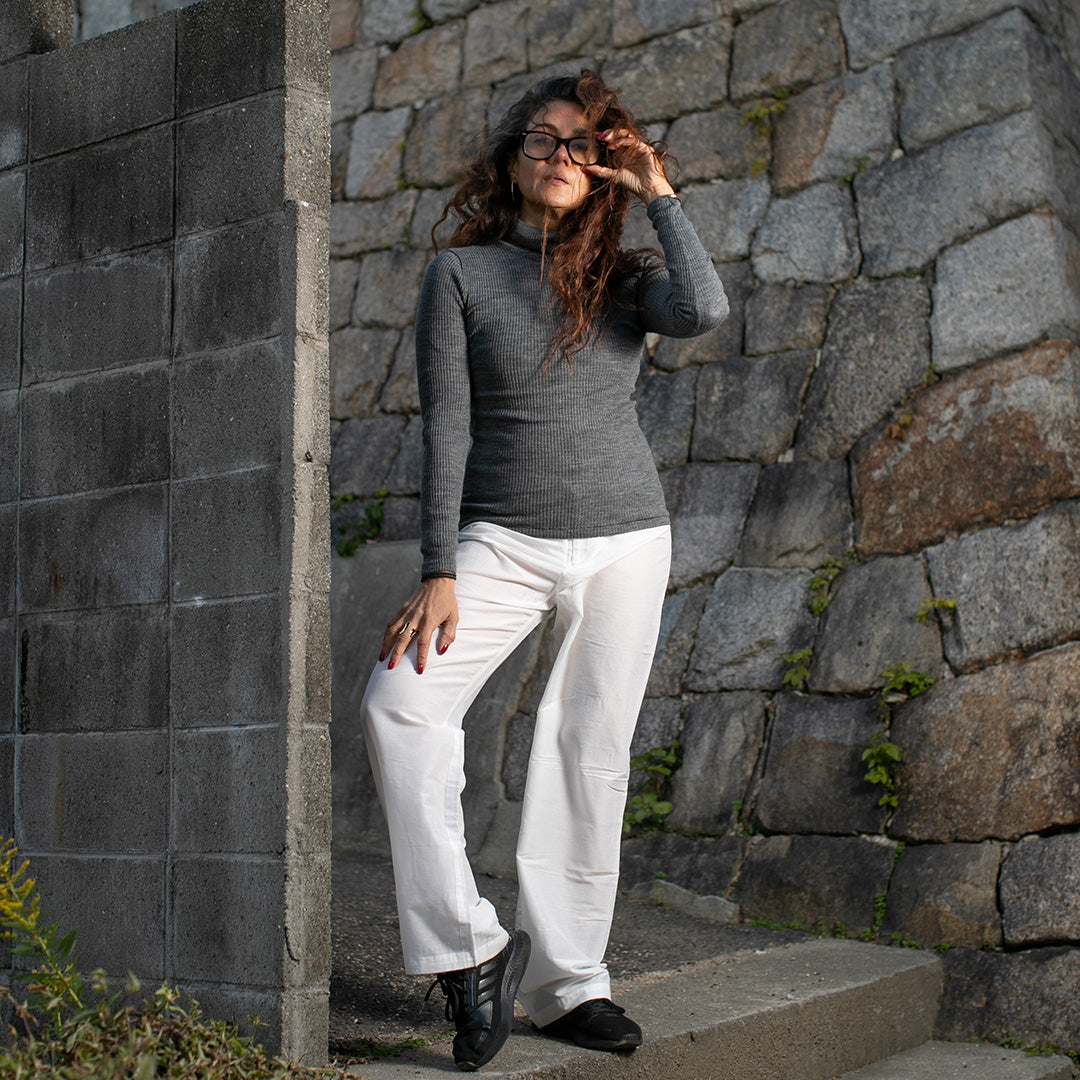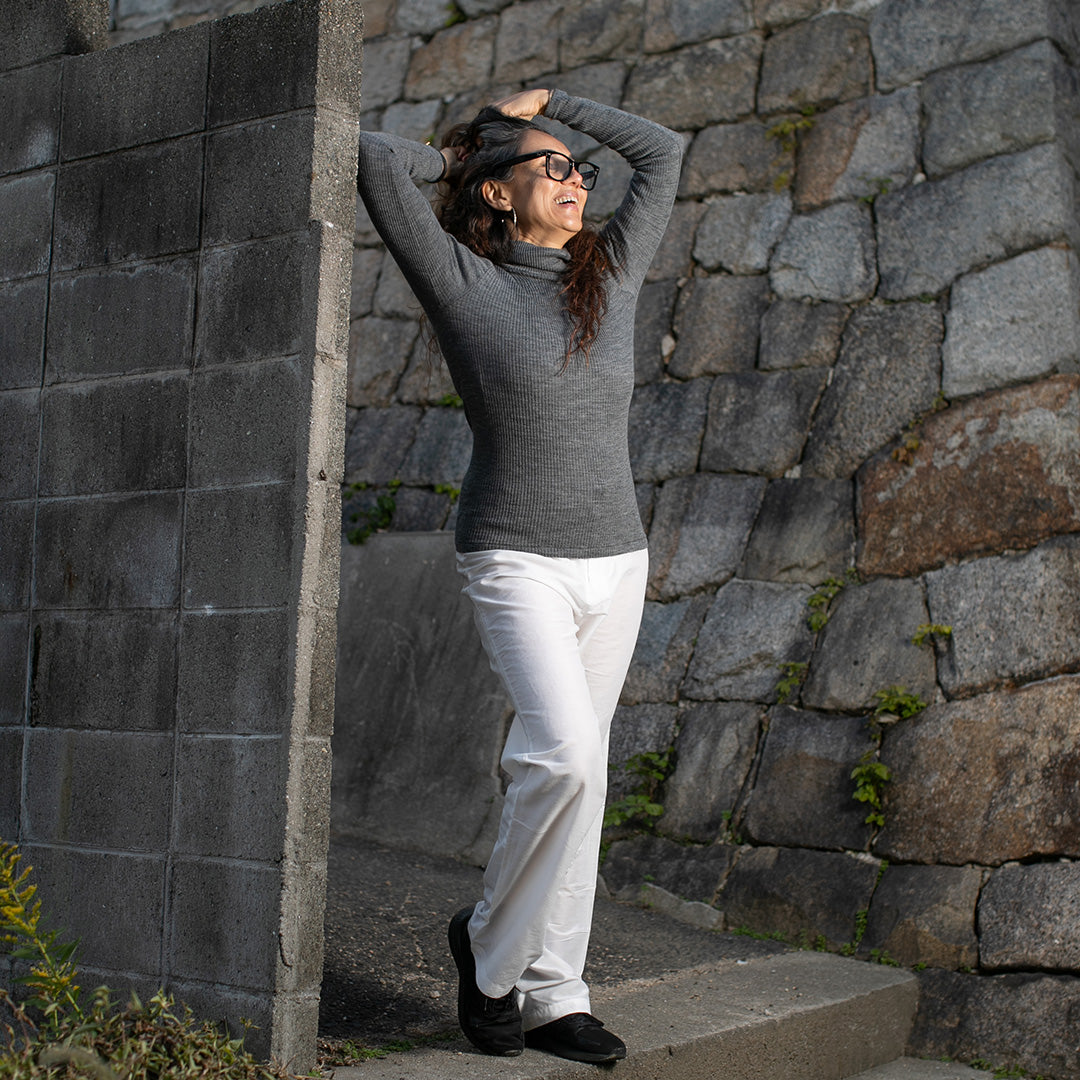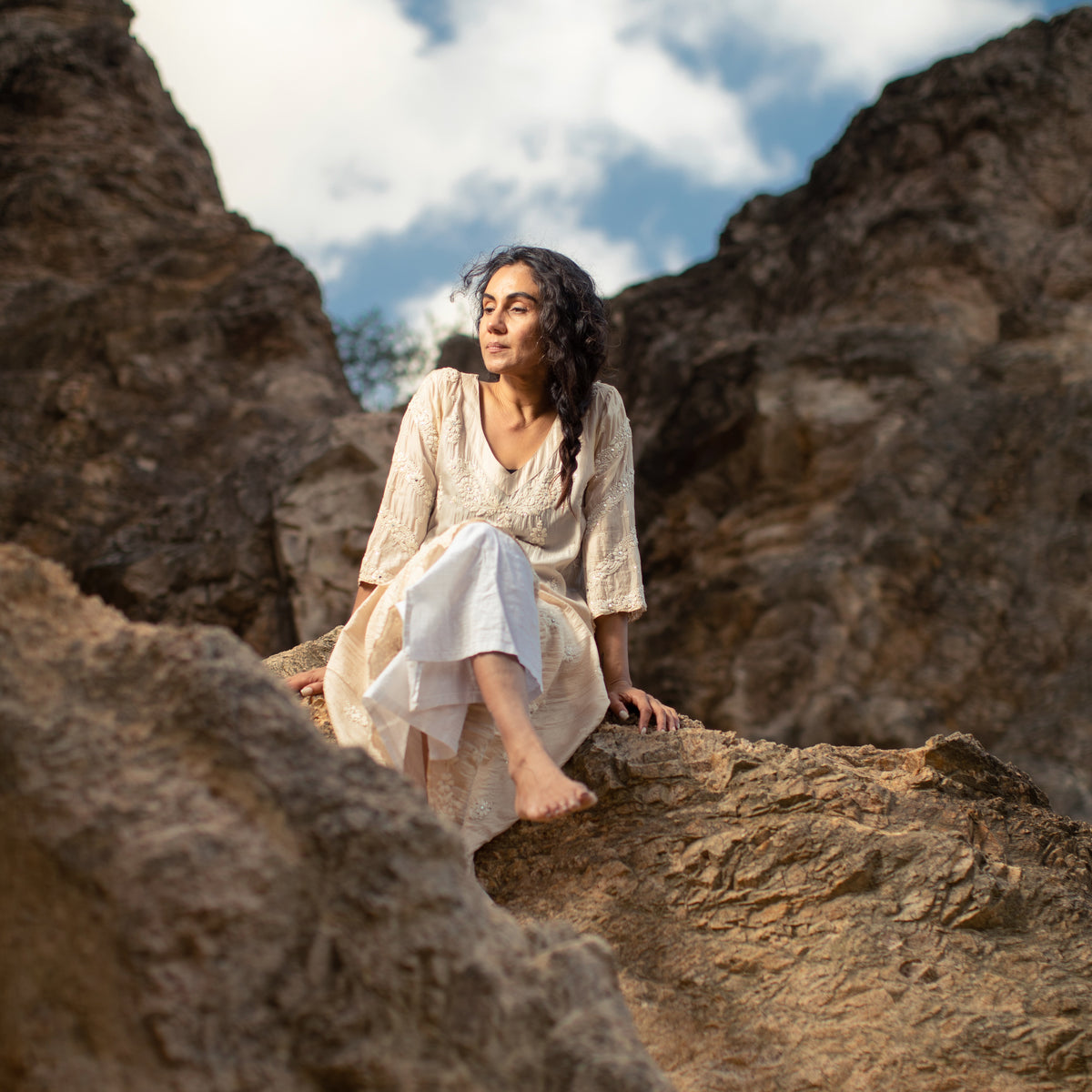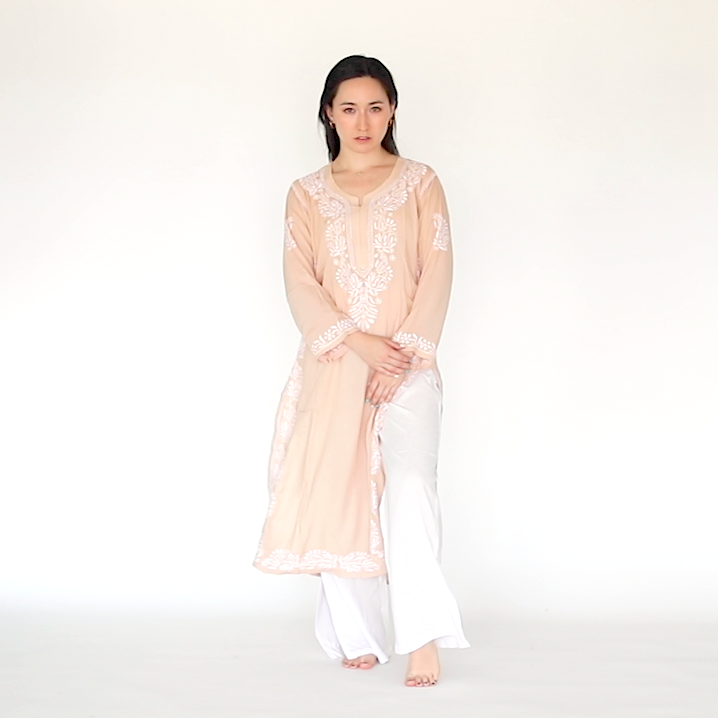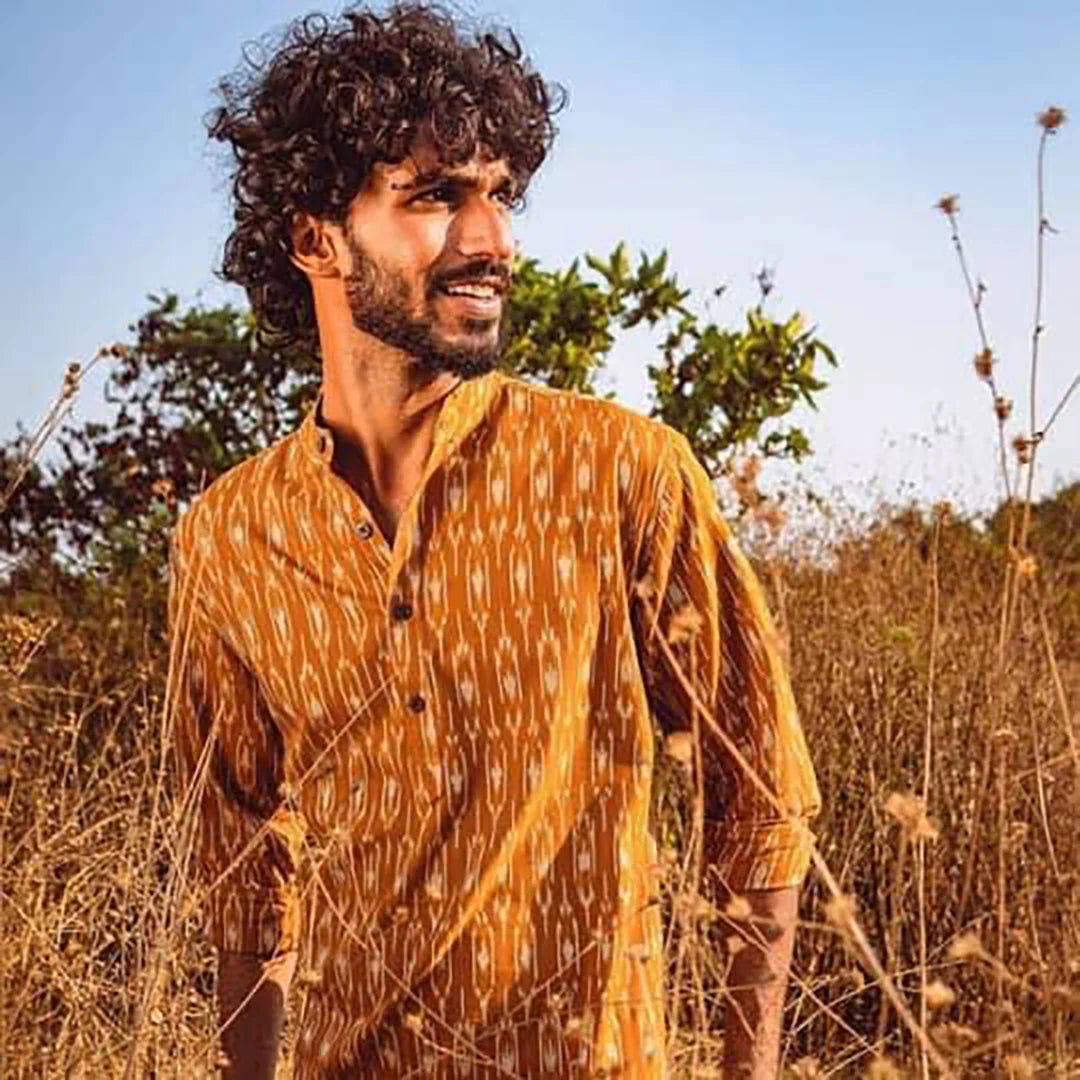India, with its diverse cultural heritage, is a treasure trove of exquisite embroidery techniques that have captivated hearts worldwide. These embroideries, each bearing a unique history and style, add a touch of timeless elegance to textiles and garments.
Here's a glimpse into some of India's most famous and widely used embroideries -
Kantha: The oldest known form of embroidery in India is believed to be Kantha embroidery, originating in the eastern regions of the Indian subcontinent, particularly in present-day West Bengal and parts of Bangladesh. Kantha embroidery has a rich history dating back over 500 years and is traditionally done by women in rural households. It involves simple running stitches that create intricate patterns and motifs, often depicting everyday life, nature, and religious themes. It is a celebration of simplicity and storytelling. Today, Kantha is widely appreciated for its rustic charm and artistic narrative, adorning sarees, dupattas, and home decor items.
Chikankari: Originating in Lucknow, Chikankari is an epitome of elegance. This delicate art involves hand-embroidering white thread on fine fabrics like muslin, silk, and chiffon. The craftsmen meticulously create floral motifs, paisleys, and intricate patterns, giving garments a timeless allure. Chikankari is often associated with grace and sophistication, making it a favorite for bridal wear and formal attire.
Our best sellers LONG COTTON TUNIC - WHITE, LONG COTTON TUNIC - BEIGE and SHORT COTTON TUNIC - WHITE are all crafted with Chikankari embroidery.
Zardozi: Steeped in Mughal opulence, Zardozi is a celebration of luxury and grandeur. Artisans meticulously stitch gold and silver threads onto rich fabrics, creating dazzling patterns adorned with pearls, beads, and precious stones. Originating in Uttar Pradesh, Delhi, and Hyderabad, Zardozi embroidery is synonymous with regal attire, especially bridal wear and ceremonial ensembles that exude royalty and splendor.
Phulkari: Vibrant and cheerful, Phulkari embroidery from Punjab is a burst of colors and patterns. Artisans skillfully stitch floral motifs using vibrant silk threads on cotton fabric, creating a striking contrast. Phulkari is often symbolic of joy and celebration, making it a popular choice for festive occasions like weddings and cultural festivities.
Kashmiri (Kashida): Inspired by the picturesque valleys of Kashmir, Kashida embroidery is a tribute to nature's beauty. Artisans intricately embroider chain stitches, depicting exquisite floral patterns, birds, and chinar leaves on fine fabrics like Pashmina. This delicate embroidery, often in pastel hues, adorns shawls, stoles, and sarees, embodying the essence of Kashmiri craftsmanship and heritage.
Mirror Work (Shisha): Originating in Gujarat and Rajasthan, Shisha embroidery adds a touch of sparkle and whimsy to textiles. Artisans skillfully incorporate small mirrors (shisha) into the embroidery, creating a dazzling effect. This technique is commonly used in traditional attire like ghagras, cholis, and dupattas, as well as in home decor items like wall hangings and cushion covers, adding a festive charm to everyday life.
The costumes for Abundance Bollywood Dance are created with this type of craftsmanship.
Kutchi: Hailing from the vibrant region of Kutch in Gujarat, Kutchi embroidery is a riot of colors and patterns. Artisans use vibrant threads, mirrors, and beads to create intricate geometric motifs, often on dark fabrics. This embroidery style is a symbol of the region's rich cultural heritage and is commonly seen in garments, accessories, and decorative items, showcasing a blend of tradition and contemporary flair.
SPANGLE DRESS in all the colors available on Abundance shop are done with Kutchi style of embroidery.
Aari: Aari embroidery, rooted in Rajasthan and Gujarat, is characterized by its fine and detailed workmanship. Artisans use a specialized needle called 'aari' to create intricate chain stitch loops, often embellished with sequins, beads, and zari work. This embroidery style is popular in bridal wear, festive ensembles, and couture garments, adding a touch of glamour and intricacy to the attire.
Gota Patti: A traditional Rajasthani embroidery technique, Gota Patti is known for its elaborate and ornate designs. Artisans use 'gota' or gold/silver ribbons to create appliqué work, often embellished with sequins, beads, and pearls. This embroidery style is widely used in bridal couture, festive wear, and traditional Rajasthani attire, showcasing a blend of cultural richness and intricate craftsmanship.
Certainly! The decline of traditional Indian embroidery styles is indeed a reality, influenced by various factors such as the prominence of fast fashion. This trend prioritizes rapid production and cost efficiency over the intricate craftsmanship and sustainability inherent in traditional embroidery techniques. The extensive time and unparalleled expertise needed for hand embroidery often clash with the swift demands of today's fashion landscape. However, through Abundance Online Shop, we aim to revive these embroidery traditions to their fullest potential.
Each embroidery style carries with it a rich history, symbolic meanings, and a unique aesthetic appeal, making Indian textiles a timeless treasure cherished by connoisseurs of art and fashion worldwide.



